Natural Pathways For Optimizing The Innate Immune System
This (updated) article explores the various components of the innate immune system and offers lists of foods and plant/fungal medicines that can help you keep your immune system in prime condition.
The sniffle season is approaching and so I wanted to preemptively put together some info for those of you looking to take conscious steps towards being able to nurture and heal your body to be resilient enough to handle anything life throws your way. Each step we take to boycott big pharma and embrace Mother Earth's medicine cabinet is a conscious choice to move into health sovereignty and realign our creative energy with the regenerative capacity of the living planet. It is in the spirit of wanting to provide knowledge that can empower those that are motivated to take steps in the direction of health sovereignty that I share the following.
Many experts consider our immune system to be the most complex system in our body. It includes the thymus gland, spleen, bone marrow, the gut and a vast network of lymph nodes. Your gut wall houses 70 percent of the cells that make up your immune system. Therefore maintaining a healthy gut flora (through eating fermented foods) is of paramount importance for keeping your immune system in good shape.
The immune system also maintains white blood cells which are vital in preventing diseases. There is not a doubt that our immune system never rests; it’s always on high alert using the foods and beverages (and other factors) we ingest to build and maintain a healthy immune system. When we fail to deliver what it needs then trouble can start.
Nutrients Are Very Important:
Our immune system loves nutrients so it’s important to ensure we’re taking in a lot of what it needs every day. Getting a good supply of vitamins A, C, D and E is critical; also anti-oxidants, beta carotene, selenium, zinc and glutathione are just as important. In reality getting a variety of vitamins, minerals and other life-nourishing nutrients is always really important (but is especially important for immune system to function well). Blue-green algae is an excellent source of many nutrients your immune system needs.
Here Is A List of Some Of My Favorite Immune System Boosting Plant and Fungal Foods:
Plant foods:
- Amaranth (Amaranthus cruentus) seeds and leaves
- Andrographis (Andrographis paniculata)
- Anthocyanin rich foods
- Astragalus (Astragalus membranaceus)
- Beets (Beta vulgaris)
- Blueberries (Vaccinium angustifolium)
- Blue Green Algae (like Chlorella or Spirulina powder/tablets)
- Cacao (Theobroma cacao)
- Cilantro (Coriandrum sativum)
- Cinnamon (Cinnamomum verum)
- Citrus fruit (particularly lemons and limes)
- Cloves
- Cranberries (Oxycoccus)
- Echinacea (Echinacea spp.)
- Elderberry (Sambucus nigra)
- Eleuthero (Eleutherococcus senticosus)
- Schisandra chinensis (aka "five flavor fruit")
- Garlic (Allium sativum)
- Ginger (Zingiber officinale) and (Asarum canadense)
- Ginkgo biloba
- Ginseng (Panax quinquefolius)
- Goji Berries (Black Goji Berries 'Lycium ruthenicum' and Red Goji berries 'Lycium barbarum')
- Green tea (Camellia sinensis)
- Hot Peppers (Capsicum)
- Kale (Brassica oleracea)
- Malaysian ginseng, aka “tongkat ali” or “pasak bumi” (Eurycoma longifolia)
- Lemon Balm (Melissa officinalis)
- Agastache foeniculum (aka Anise Hyssop)
- Service Berries/ Saskatoon Berries
- Stinging Nettle (Urtica dioica)
- Onions (Allium cepa)
- Star Anise (Illicium verum)
- Sweet Potato (Ipomoea batatas)
- Turmeric ( Curcuma longa)
- Yarrow
- Broadleaf cattail, bulrush, common bulrush or common cattail (aka Typha latifolia)
- Tulsi aka Holy Basil
- Eastern White Pine Needles
- Pine pollen, seeds and foliage from a range of species
- Rhodiola rosea L
Sea Vegetables:
- Bladderwrack (fucus vesiculosus)
- Wakame (Undaria pinnatifida)
- Irish Moss (chondrus crispus)
Fungal foods:
-Shiitake (Lentinula edodes)
-Reishi (Ganoderma lucidum)
-Lion's Mane (Hericium erinaceus)
-Maitake(Grifola frondosa)
-Cordyceps (Cordyceps militaris)
-Turkey Tail (Trametes versicolor)
-Chaga (Inonotus Obliquus)
Ways to Help Keep Your White Blood Cells Healthy
Vitamins C, E, carotenoids, Omega-3, selenium, and zinc are the main nutrients to focus on while maintaining a healthy white blood cell count. You’ll get lots of these nutrients in wild edibles such as: purslane, garlic mustard, conifers, Queen Anne’s lace, wild grape vine, dandelion, plantains (P. major and P. lanceolata) and stinging nettle.
These are some compounds you can either take in supplements (or find in some foods) that support the formation and resilience of specialized white blood cells (such as macrophages, dendritic cells, T and B cells, NK cells, Mast Cells, Basophils, and Eosinophils) :
- NAC (N-Acetyl-L-cysteine) (Cysteine is found in most high-protein foods, shiitake mushrooms, yogurt, cheese, eggs, sunflower seeds and legumes.)
- Palmitoylethanolamide (found in eggs, fermented soy beans and peanuts)
- L-Theanine (found in green tea leaves and in Bolete mushrooms)
Boosting Overall Immune System Health:
Immune-boosting foods – Refined, processed, and sugary foods are a recipe for developing a compromised immune system. Eating a diet rich in fresh vegetables and fruits, which provide a wide range of essential antioxidants and nutrients including wild edible plants in important. The immune system also depends on high-quality proteins and healthful fats, especially monounsaturated fats (such as those found in cold pressed coconut oil and extra virgin olive oil) to repair tissues and create healthy immune cells.
Exercise – Science has proven that regular exercise (at least 30 minutes daily most days of the week), increases immune function. Moderate exercise increases the numbers of all types of white blood cells and makes natural killer cells become more active and effective. Interestingly, excessive exercise regimes can temporarily hinder immune function.
Reduce stress – Emotional stressors stimulate the secretion of adrenal hormones, which suppress the activity of the thymus gland and white blood cells. Getting outside for a walk in the woods or even going foraging are great ways to help combat stress.
Sleep well – Lack of quality sleep negatively affects immune function in a few ways. Without enough quality rest the body slows its production of disease-fighting white blood cells. During a quality sleep, the body releases powerful immune-enhancing compounds, such as interferon.
Avoid toxins – Toxic chemicals impair immune function and trigger the formation of cell-damaging free radicals. Toxins seem to be everywhere in our environment these days making it very important to be a label-reader. Cleaning products, personal care products, food, beverages, even over-the-counter and prescription medications all contain questionable ingredients that can cause harm to our immune system.
Unlocking the bioavailability of some nutrients that optimize immune function requires pairing them with other foods. For instance, Vitamins A,D,E, & K are all fat soluble. Therefore, you should consume these alongside healthy fats (such as organic coldpressed coconut oil, hemp seed oil, avocado etc).
Moderation in all things: including a diverse array of these immune system optimizing foods in your diet is a great way to increase your overall health but you can have too much of a good thing. In my experience, there is wisdom behind using potent plant and fungal medicines in moderation (and/or in cycles where one takes a break in between and/or switches to another plant/fungal medicine that can offer similar benefits). The practical reasons behind this wisdom are three fold:
Firstly some (but not all) of these powerful plant and fungal medicines do indeed activate specific cellular functions and put certain organs of the body on "high alert" that only need be activated when one is attempting to neutralize an infection, heal/dissolve an unwanted growth of cells and/or to regenerate specialized cells in key organs that need 'nutritional/phytochemical or myco-chemical encouragement' to be able to regenerate. Having said organs and cells on perpetual "high alert" status can indeed create it's own set of problems.
Secondly, some (but not all) of these powerful plant and fungal medicines can become less efficacious over time if taken regularly (due to the desensitization of specific receptor sites in organs and cells that intake the compounds these power plant/fungal medicines contain.
Thirdly, some (but not all) of these powerful plant/fungal medicines contain compounds/minerals that are benign when ingested in low concentrations but can cause cumulative damage and issues if the body is saturated with said compounds/minerals and is not given a chance to flush them out in between instances where one ingests the plant/fungus containing them. Chaga is one such superfood/medicine as is contains a high oxalate content (which can cause issues for the kidneys when taken in large amounts). One can avoid this by only ingesting Chaga (and other powerful medicine plants or fungi that contain similar compounds) sparingly/intermittently. Additionally if one feels they need to take large amounts of Chaga (or something similar) to treat a specific health issue for a sustained duration of time, one can mitigate the damage problematic compounds contained within may cause (while still being able to access the powerful healing effects of taking the given fungi/plant in higher amounts) via drinking lots of good quality water (and in the case of something like Chaga via also consuming enough calcium rich foods, which binds to oxalates during digestion and helps flush them out).
In my study of human biology and nutrition I have found there are also ways to get around the challenge of natural medicines becoming less effective over time (due to desensitization via over stimulation of cellular receptor sites, or as some say "building resistance"). If one eats a rich diversity of medicinal plants and fungi and rotates through them (as to not over stimulate the particular cellular receptor cites that take in the active medicinal compounds found within said plants and/or fungi) this enables the medicine to remain potent and effective at relatively low concentrations via keeping our cells 'agile' through introducing a broad spectrum of phytochemicals (biological/epigenetic information and molecular building blocks/fuel). Thus, I do see immense value and wisdom in the practice of not consuming the most potent of the medicine plants and fungi everyday (day after day, week after week, month after month).
That being said, we live on a world that has sprayed (and continues to be sprayed with) so much toxic chemicals (such as glyphosate and metallic nano-particulates) that these substances are now ubiquitous in the water cycles -rain, tap water, ground water-, soil and air (all while we are also being bombarded with a wide range of electromagnetic radiation from various devices from all directions). One can remove toxic foods from the diet but these larger dynamics are pervasive and unavoidable in many parts of the world for the vast majority (those of us that do not own a private jet, D.U.M.B. or other means of moving freely and/or hiding in sealed facilities and processing/purifying all water/food intake). Thus, I strive to emphasize the importance of understanding and utilizing food as medicine in our daily routine so that we can neutralize, expel and/or mitigate the damage these substances and/or forms of radiation are doing to our human biology. These environmental pressures can cripple certain aspects of our immune system if we do not take steps to mitigate the biological stress/damage induced said environmental stressors. Pursuant to this, I incorporate powerful antioxidant rich foods, chelating foods and radioprotective foods into my diet each day (While also striving to grow/ have on hand at least three foods that serve the same medicinal functions so that I can rotate through them). This is one of the thoughts that motivated my experimentation when I was formulating recipes for my soon to be published book. I wanted to hone recipes for a diverse array of enjoyable meals (which incorporate different groups of the immune system optimizing foods listed above) so that we could potentially get all the immune system supplementation / optimization we need to be our best selves without needing to buy expensive synthetic (or natural) supplements (and while having enough different recipes where we can cycle through them, allowing the medicinal compounds contained within to remain potent and effective).
White Blood Cells:
White blood cells play a vital role in the immune system. These cells help prevent infections by neutralizing, expelling and/or integrating bacteria, “viruses” (exomic particles containing genetic information) and “germs“ that enter the body (rendering them harmless).
Low white blood cell counts can result from various conditions including infection including: bone marrow problems, leukemia and autoimmune diseases. It also can be the result of chemotherapy or radiation treatment. If a person has a high white blood cell count, it may indicate that they have an infection and that the immune system is working to destroy it. It may also be a sign that the person is experiencing physical or emotional stress. People with particular blood cancers may also have high white blood cells counts.
Glutathione is the best antioxidant that the body makes.
Glutathione is made up of three amino acids. N-acetylcysteine (NAC) is a major component of glutathione. The other two amino acids are Glycine and Glutamine.
𝗙𝗼𝗼𝗱𝘀 𝘁𝗵𝗮𝘁 𝗰𝗼𝗻𝘁𝗮𝗶𝗻 𝗚𝗹𝘆𝗰𝗶𝗻𝗲:
– Spirulina
– Seaweed
– Watercress
– Amaranth (greens and seeds)
– Organic Bone Broth
– Spinach
– Legumes (runner beans, soybeans, peanuts and peanut butter, peas, mung beans, lentils, and kidney beans etc, preferably fermented as miso paste if it is soy beans).
– Organic Gelatin (such as you would use to make jello or gummies)
– Asparagus
– Nuts and seeds (such as pumpkin or squash seeds, hemp seeds, butternuts, walnuts, sunflower seeds, almonds, flax seeds, sesame seeds and chai seeds)
– Cabbage
– Bamboo shoots
– Kale
– Yogurt/ Kefir (from grass fed animals or you`ll get loaded up with glyphosate from their gmo grain feed)
N-acetyl cysteine (NAC) is a supplement form of cysteine.
𝗖𝘆𝘀𝘁𝗲𝗶𝗻𝗲 𝗶𝘀 𝗳𝗼𝘂𝗻𝗱 𝗶𝗻 𝗮 𝗿𝗮𝗻𝗴𝗲 𝗼𝗳 𝗵𝗶𝗴𝗵-𝗽𝗿𝗼𝘁𝗲𝗶𝗻 𝗳𝗼𝗼𝗱𝘀 𝗮𝗻𝗱 𝘀𝗼𝗺𝗲 𝘃𝗲𝗴𝗲𝘁𝗮𝗯𝗹𝗲𝘀/𝗵𝗲𝗿𝗯𝘀, 𝘀𝗼𝗺𝗲 𝗲𝘅𝗮𝗺𝗽𝗹𝗲𝘀 𝗶𝗻𝗰𝗹𝘂𝗱𝗲:
– shiitake mushrooms
– spirulina
– yogurt or cheese (from grass fed animals or you`ll get loaded up with glyphosate from their gmo grain feed)
– eggs (from organically raised chickens)
– sunflower seeds
– organic sourdough bread
– Dates
– Ginseng
– legumes (same story as above, fermented is better, especially with soy beans and obviously watch out for the ones dosed with glyphosate)
– Peppers
– Cabbage
– Garlic
– Onions
– Kale
– Nuts (pecans, cashews, hazelnuts, almonds, and Brazil nuts)
– Seeds (sesame seeds, amaranath seeds, hemp seeds etc)
𝗙𝗼𝗼𝗱𝘀 𝘁𝗵𝗮𝘁 𝗰𝗼𝗻𝘁𝗮𝗶𝗻 𝗚𝗹𝘂𝘁𝗮𝗺𝗶𝗻𝗲:
– Spirulina
– Seaweed (such as dulse, nori or kombu)
– Yogurt and Ricotta Cheese (from grass fed animals or you`ll get loaded up with glyphosate from their gmo grain feed)
– Legumes (same story as above)
– Red cabbage
– organic Eggs
– Nuts
– Parsley
– Dark Leafy Greens (such as amaranth greens, mustard greens, spinach, collard greens, kale, lettuce, radish greens, and cilantro, are good sources of glutamine)
– Organic Bone Broth
– Nuts and seeds (such as cashews, hazelnuts, pistachios, coconut milk, pumpkin or squash seeds, hemp seeds, butternuts, walnuts, sunflower seeds, almonds, flax seeds, brazil nuts, sesame seeds and chai seeds).
Here are some Delicious Synergistic Immune System Optimizing Recipes (Which Combine Some Of The Above Mentioned Immune System Nourishing Ingredients):
Adaptogenic Super Taco Mix
I love Mexican food (well I love a lot of food with cultural roots south of the US border going all the way down to traditional Incan territory really) so I have been experimenting with combining my passion for making tacos, burritos, enchiladas, fajitas and heuvos rancheros with my more recently acquired knowledge of
Golden Dragon Chi
This is Installment #10 of the (Stacking Functions in the Garden, Food Forest and Medicine Cabinet : The Regenerative Way From Seed To Apothecary series.
7 Fold Flame Sriracha
This is Installment #12 of the (Stacking Functions in the Garden, Food Forest and Medicine Cabinet : The Regenerative Way From Seed To Apothecary series.
Garden Minestrone Soup
I have always loved minestrone soup over since my childhood as my mom was a great soup maker. When her homemade version was not available I would go to the grocery store to try and find a facsimile but it was never the same. Thus, minestrone was one of the very first soups I taught myself to make in my youth and I have been improving on my recipe ever s…
1. Wild Fermented Turmeric, Ginger and Lemon Slices with Tri-colored Pepper Corns: (I share the full recipe in the comments section which is accessible through the link above).
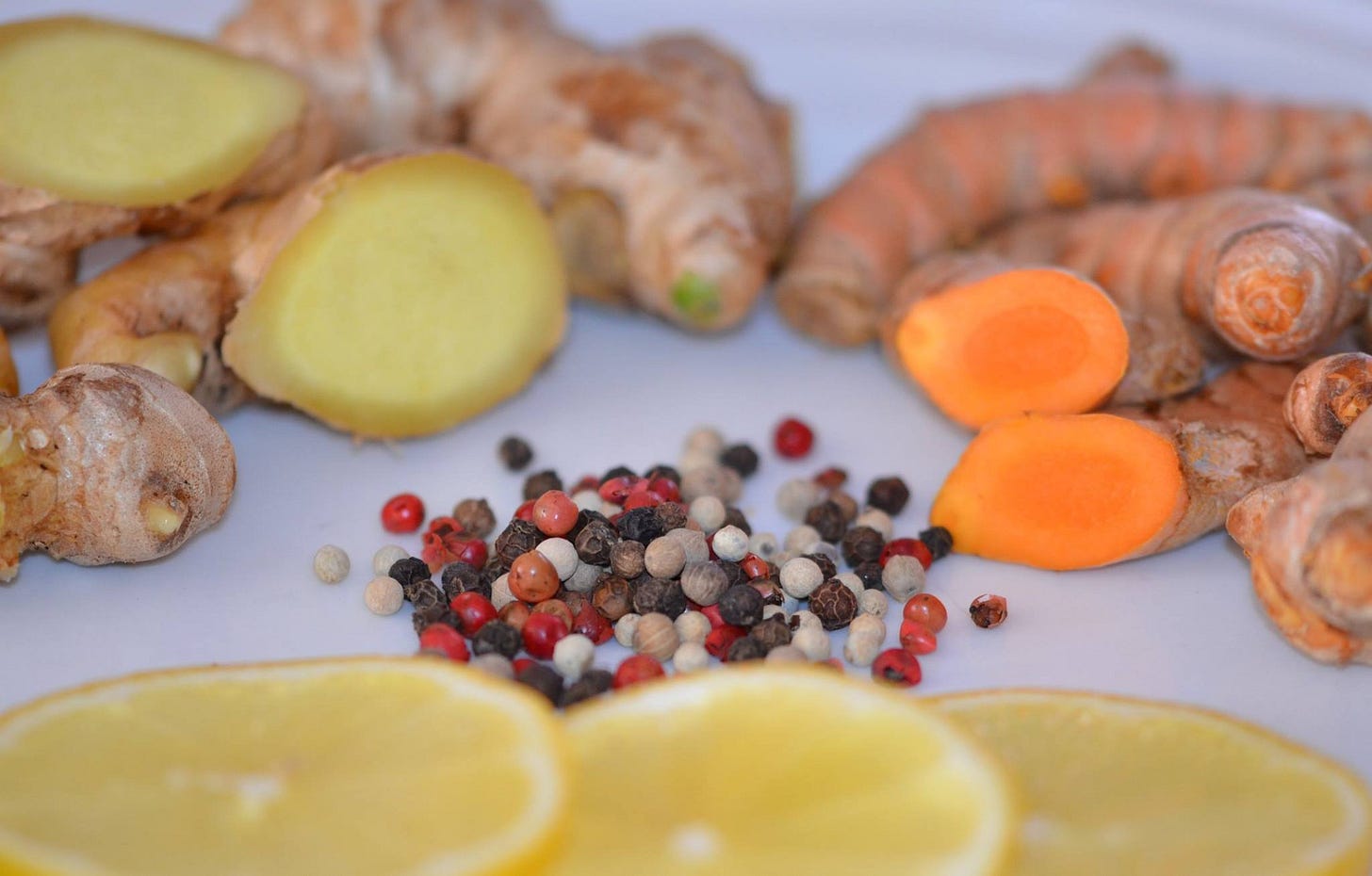
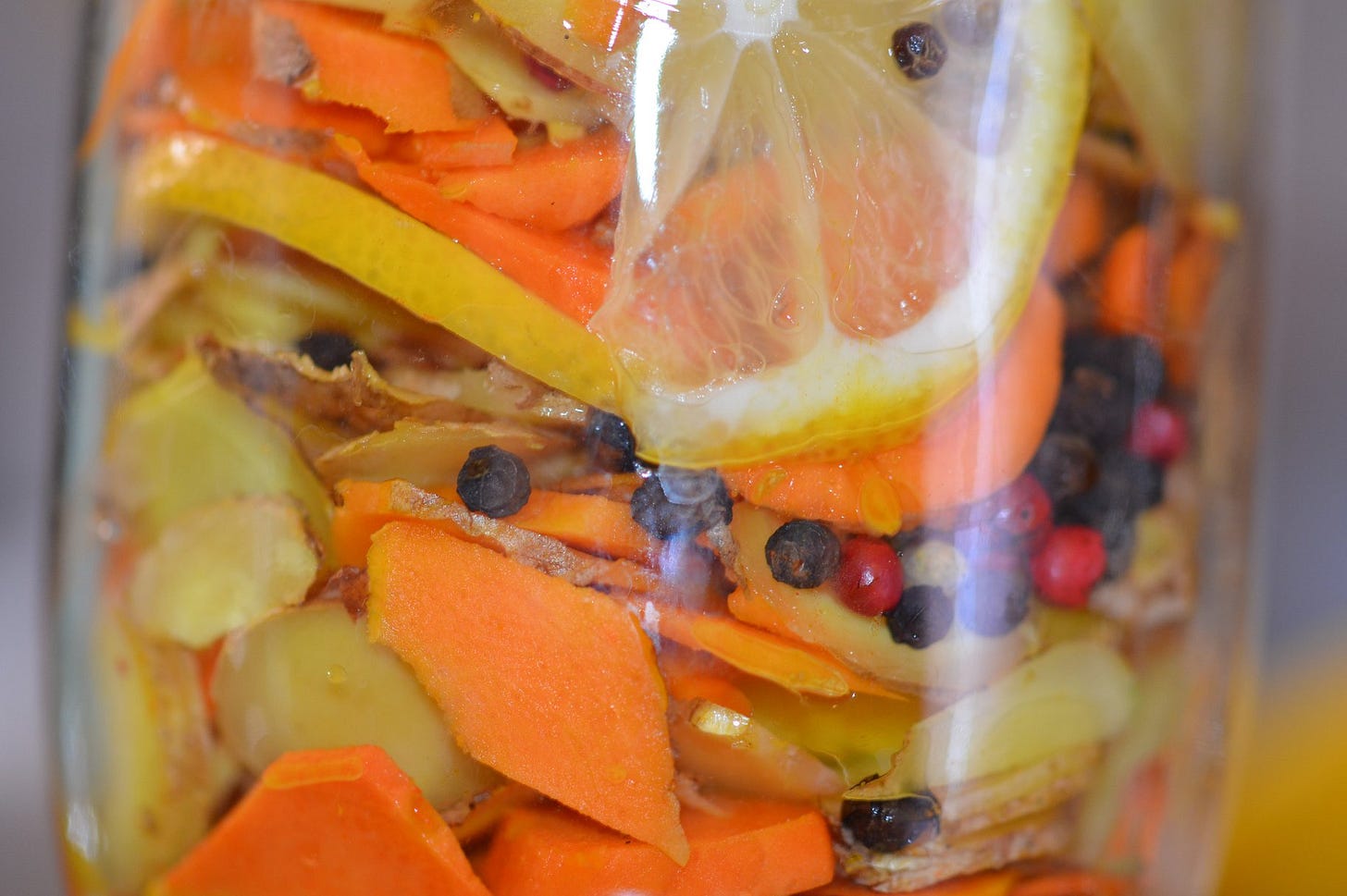
2. Vegetarian Khao Poon (I share the full recipe for this extremely nutritious and healing traditional Laotian on the update linked above).
(The following recipes will be included in my upcoming book):
3. Purple Dragon Chi' (An anthocyanin rich Kimchi)

4. 'Midnight Miso' Soup
5. Thai Roasted Sweet Potato, Ginger and Carrot Soup
6. Xocolatl (an ancient traditional Mayan Cocao beverage)
7. Jeweled Tabbouleh with Ancient Grains and North African Spices:
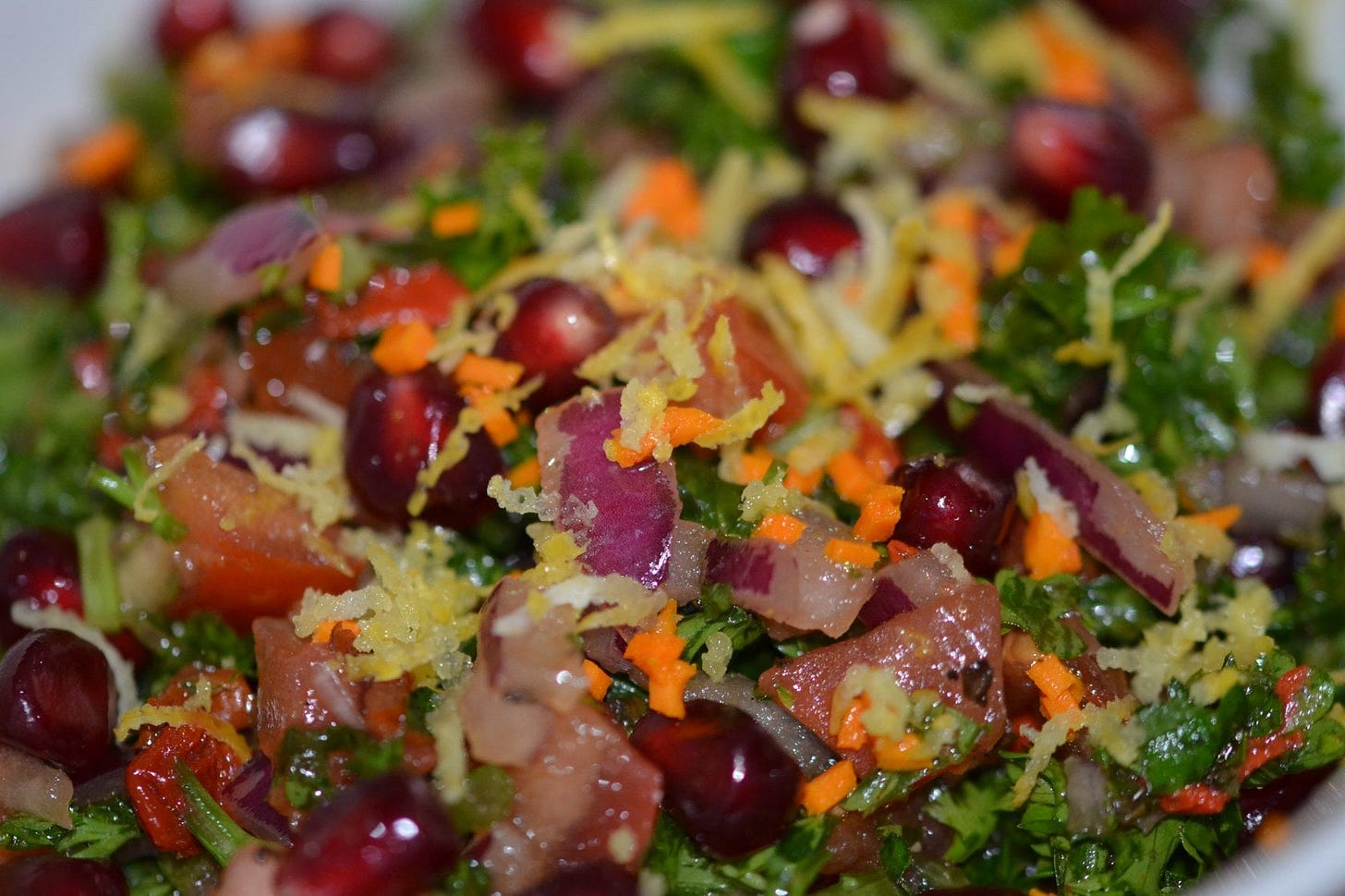

8. Amaranth Seed, Trail Of Tears and Hokkaido Black Soy Bean Miso Paste
9. Sauerkraut
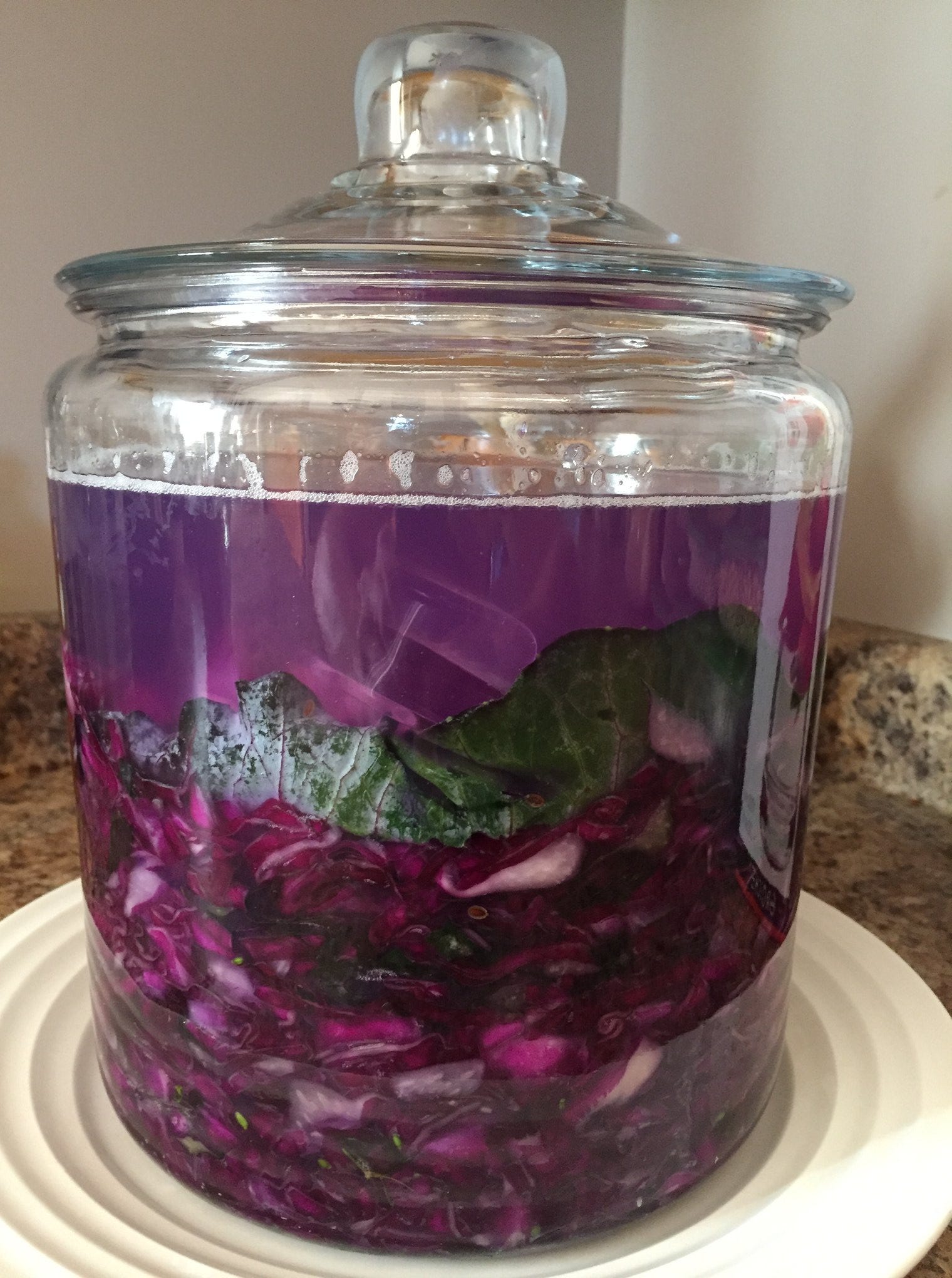
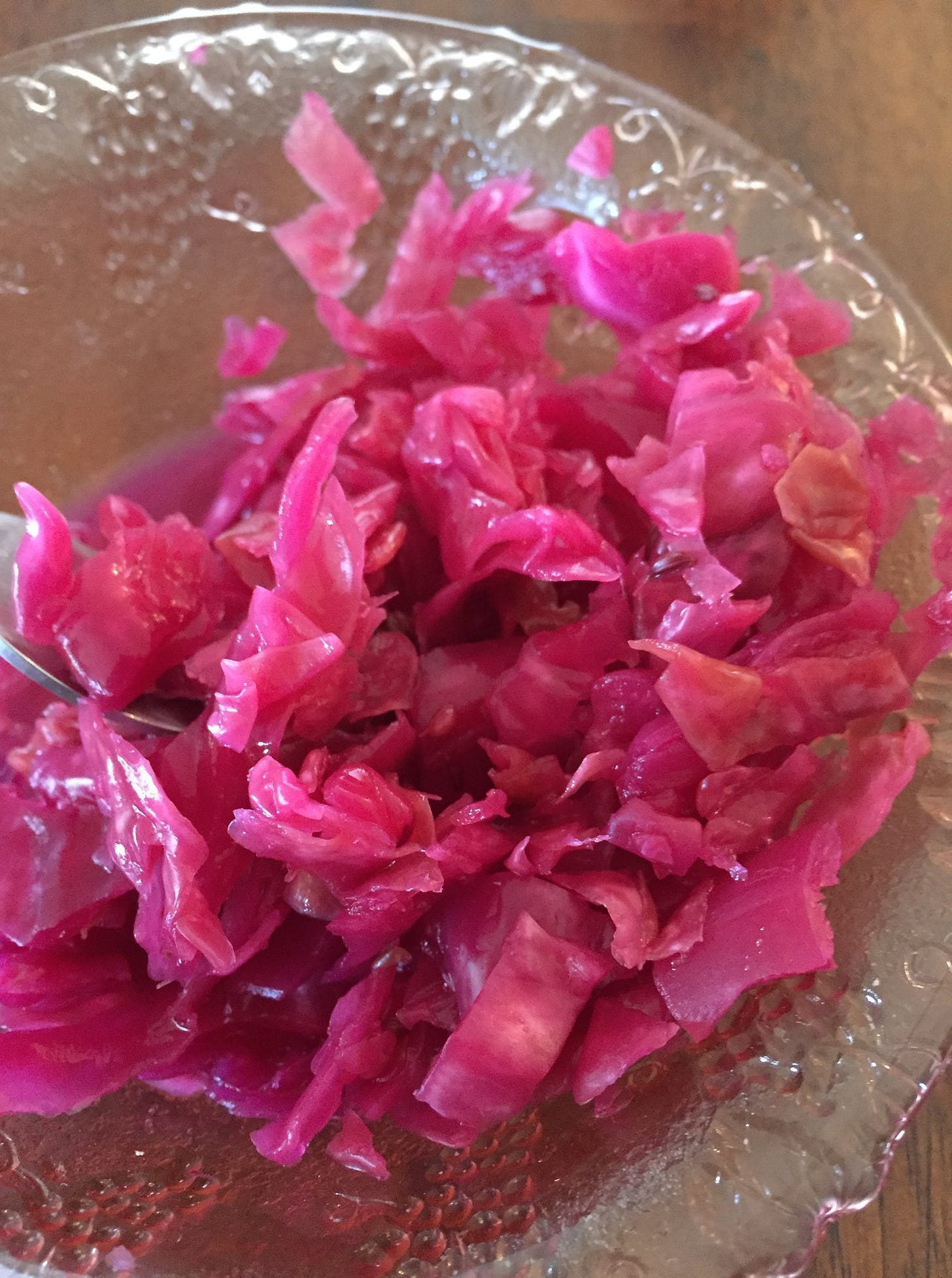
For more info:
30 Reasons To Make Your Own Sauerkraut and Include a Daily Forkful In Your Diet (and a basic recipe from my book to make your own at home).
Preserved cabbage looks simple (and the process to make raw cabbage i…
You can learn more about my book through this link: recipesforreciprocity.com
-----------------------------------------------------------
Here are some links to anti-viral plant/ fungi lists with in depth info on each (there will inevitably be some overlap of species listed):
- http://medherb.com/eletter/Antiviral-Bergner.pdf
- https://rawlsmd.com/health-articles/6-cost-effective-ways-to-boost-your-immune-system?fbclid=IwAR180mvJa6Y7oOTTdLKrd6VUwsVl6LW1nPHqG_agSggpnkmIPJ8oTSCpPos
- https://news.ncsu.edu/2020/11/food-chemical-compounds-can-inhibit-a-key-sars-cov-2-enzyme/?fbclid=IwAR37JF_tFG7JhBEZo5LatdhTKkl1FHB6st44Pgd-OlBDK9H_ml9wmLxz0q4
- https://www.healthline.com/nutrition/antiviral-herbs#15.-Dandelion
- http://www.istc.int/en/project/E163E8156E65CA19C3256C8C003EC65F
- https://scienceandartofherbalism.com/suggested-herbal-supports-for-influenza-influenza-like-illness-in-the-event-of-a-pandemic/
- https://enchantersgreen.com/blog/2020/3/18/antiviral-properties-of-alder-in-a-clinical-amp-theoretical-context?fbclid=IwAR2dAhAZ7dUk_wXJVLZxk44Mqg6FK5FU3iWAFM4MYmhBz6n30UQ0HvZzZHI
- https://scialert.net/fulltext/?doi=ajava.2011.1125.1152
- https://oand.org/uncategory/top-ten-natural-anti-viral-agents/
- https://virologyj.biomedcentral.com/articles/10.1186/s12985-018-1022-7
- https://sfamjournals.onlinelibrary.wiley.com/doi/full/10.1046/j.1365-2672.2003.02026.x
- https://draxe.com/nutrition/antiviral-herbs/
- https://www.nature.com/articles/s41477-020-0628-0
- https://www.frontiersin.org/articles/10.3389/fmicb.2018.02325/full
- http://www.istc.int/en/project/E163E8156E65CA19C3256C8C003EC65F
- https://www.semanticscholar.org/paper/Antiviral-Agents-From-Fungi%3A-Diversity%2C-Mechanisms-Linnakoski-Reshamwala/ccfe7e423748bcb757557d215a1e635cf35ce8cf
- https://www.mindbodygreen.com/articles/how-immunologist-uses-fungi-to-fight-cold-and-flu
- https://www.ncbi.nlm.nih.gov/pmc/articles/PMC4828654/
- https://www.reliasmedia.com/articles/70791-spirulina-blue-green-algae-as-an-antiviral-antineoplastic-and-anti-inflammatory-agent
For those that are interested in really diving deep down the rabbit hole of understanding the innate immune system and creating natural medicines for nourishing and optimizing it’s many moving parts… the following is my own take on some advanced research I stumbled across that were used to make a leading edge natural immunity product. I researched each ingredient that went into it so I could back engineer an enhanced DIY version at a much lower cost.
In a future substack post I will share my recipe for the enhanced elder berry syrup I made after reading several books on herbalism, Arauvedic medicine, TCM and then incorporating the research and ingredient list of the product I linked above to anyone who is interested in making their own. I called it Exponential Immunity Elderberry Syrup.
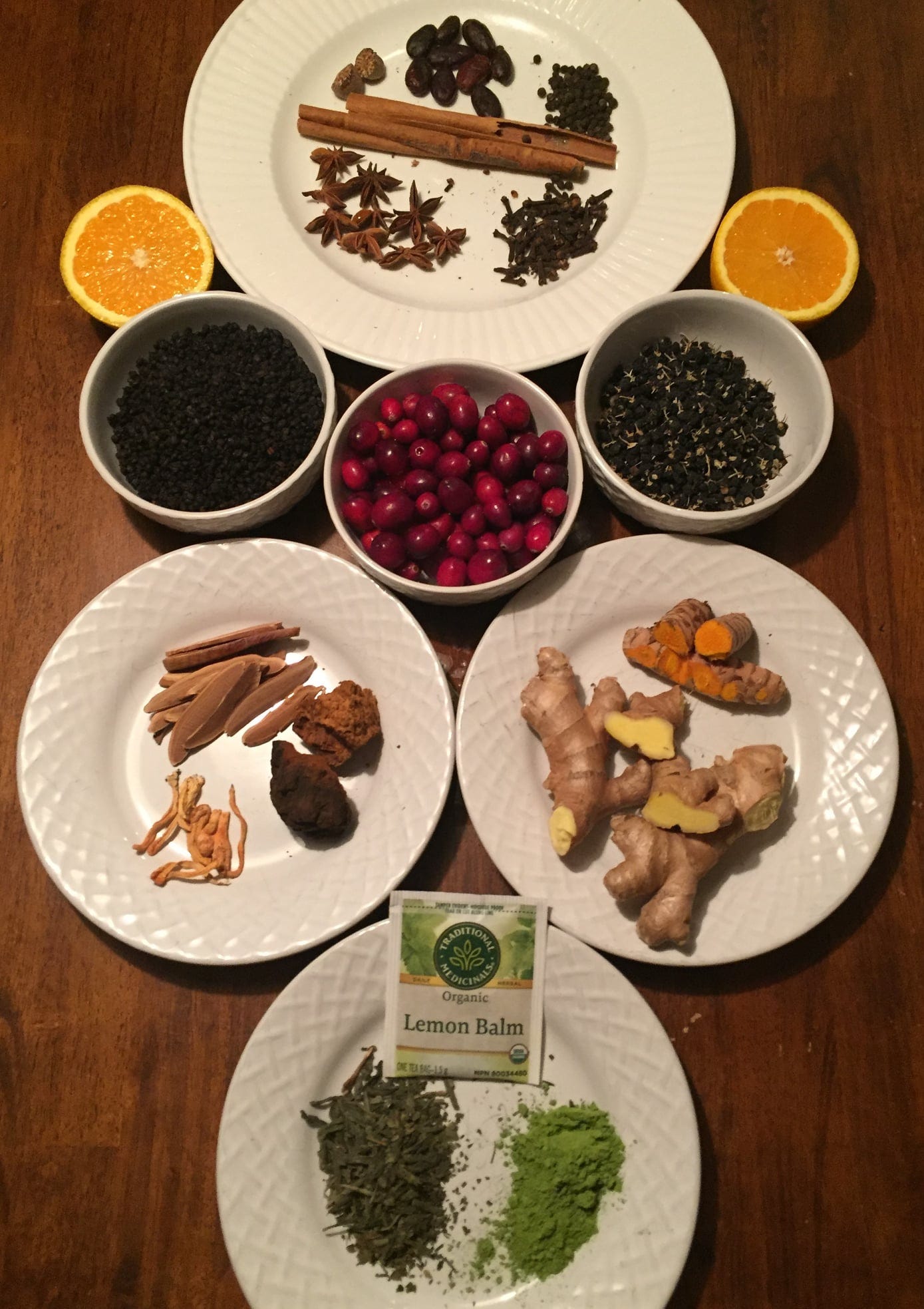
Here is some of the research that went into making it.
Increasing The Innate Intelligence Of The Immune System
(this article includes lists of foods/supplements which support specific parts of the immune system)
Immune cells are white blood cells (also called leukocytes) and are created in bone marrow by a limited number of hematopoietic stem cells. Hematopoietic stem cells also produce red blood cells (also called erythrocytes) and platelets (also called thrombocytes).
Hematopoietic stem cells are capable of extensive self-renewal. The self-renewal occurs in the stem cell niche within bone marrow. So hematopoietic stem cells, bone marrow, and the environment of the stem cell niche where self-renewal occurs play important parts in giving birth to the cells of the immune ecosystem.
Here are some plants and fungi that contain Hematopoietic Stem Cell Supportive Compounds:
Seaweeds:
- Bladderwrack (fucus vesiculosus)
- Wakame (Undaria pinnatifida )
Fungi:
- Shiitake (Lentinula edodes)
- Reishi (Ganoderma lucidum)
- Maitake (Grifola frondosa)
Other plants
- Heart-leaved moonseed aka ‘Guduchi’ stem extract (Tinospora cordifolia)
The immune system has to know what to respond to (some non-self molecules) and what to ignore (self molecules, food, gut microbiota, etc.). This ignoring is called immune tolerance, a state of indifference towards certain molecules. Immunological tolerance allows the host to adapt to molecular stimuli that will consistently be present instead of expending resources on them. It is analogous to what occurs with how the brain responds to sensory information. The brain does not respond to all auditory or visual stimuli: It intentionally chooses to ignore most of it.
Here are some vitamins, plants and fungi that contain Immune Tolerance Supporting Compounds:
- Vitamin D3 (cholecalciferol)
- Selenium
- Zinc
- Japanese knotweed (Polygonum cuspidatum) Root Extract (containing Resveratrol)
Seaweed (such as):
- Bladderwrack (fucus vesiculosus)
- Wakame (Undaria pinnatifida )
- Korean ginseng (Panax ginseng) Root Extract
- NAC (N-Acetyl-L-cysteine) (Cysteine is found in most high-protein foods, shiitake mushrooms, yogurt, cheese, eggs, sunflower seeds and legumes.)
- Broccoli or Kale Sprouts
- Spirulina (Arthrospira platensis)
- Echinacea purpurea Root Extract
- Beta Glucan
- Palmitoylethanolamide (found in eggs, fermented soy beans and peanuts)
- Reishi Mushroom (Ganoderma lucidum)
Next up: Neutrophils. They are the most abundant of all white blood cells—a healthy adult produces more than 100 billion neutrophils per day! Neutrophils (sometimes called polymorphonuclear leukocytes) are part of the ‘fast thinking’ innate immune system. In fact, you might say they are the fastest thinkers, because they are the first responders of the immune system. Neutrophils migrate quickly to where they are needed, begin to deal with the situation, and recruit other immune cells to help. They are classified as phagocytes, because their solution for dealing with situations includes ingesting molecules—phago is from a Greek word that means to eat or devour.
Here are some vitamins, plants and fungi that contain Neutrophil Supportive Compounds:
- L-Theanine (found in tea leaves and in Bolete mushrooms)
- NAC (N-Acetyl-L-cysteine) Cysteine is found in most high-protein foods, shiitake mushrooms, legumes, yogurt, cheese, eggs, and sunflower seeds.)
- Beta Glucan
Seaweed (such as):
- Bladderwrack (fucus vesiculosus)
- Wakame (Undaria pinnatifida )
- Japanese knotweed (Polygonum cuspidatum) Root Extract (containing Resveratrol)
- Selenium
- Zinc
- Broccoli or Kale Sprouts
- Heart-leaved moonseed aka ‘Guduchi’ stem extract (Tinospora cordifolia)
Neutrophils are granulocytes. Granulocytes are a category of innate immune cells. This category is defined by how the cells look under a microscope—they contain protein and chemical particles on the inside (i.e., granules)—not by their job function. The other granulocytes are mast cells, basophils, and eosinophils. While mast cells, basophils, and eosinophils have somewhat different functional roles within immunity, they get grouped together because they: 1 share a similar appearance, 2 are involved with the histamine and immunoglobulin E (IgE) part of the immune response, and 3 evolved to recognize molecular patterns from things in the environment the immune system was challenged with in the past. They represent aspects of immune wisdom that were the solution to a past problem that was considered important enough to pass down as part of the ‘fast thinking’ innate immune system we inherit.
Mast cells, basophils, and eosinophils specialize in immune intelligence strategies that evolved based on what challenged developing human immune systems in the past, but rarely challenge immune systems today. They are part of the Hygiene (i.e., “Old Friends”) Hypothesis, which is the idea that if developing immune systems don’t get challenged by certain molecules, they might not learn important lessons in immune tolerance. This failure to learn results in a tendency to overreact to molecules that should be ignored. The goal with mast cells, basophils, and eosinophils is to help them to be more tolerant, supporting them in ways that allow them to become smarter when it comes to ignoring harmless molecules.
Here are some vitamins, plants and fungi that contain Mast Cell, Basophil, and Eosinophil Supporting Compounds:
- Spirulina (Arthrospira platensis)
- L-Theanine (found in tea leaves and in Bolete mushrooms)
- Palmitoylethanolamide (found in eggs, fermented soy beans and peanuts)
- NAC (N-Acetyl-L-cysteine) Cysteine is found in most high-protein foods, shiitake mushrooms, legumes, yogurt, cheese, eggs, and sunflower seeds.)
- Beta Glucan
Seaweed (such as):
- Bladderwrack (fucus vesiculosus)
- Wakame (Undaria pinnatifida )
- Japanese knotweed (Polygonum cuspidatum) Root Extract (containing Resveratrol)
- Selenium
- Broccoli or Kale Sprouts
- Heart-leaved moonseed aka ‘Guduchi’ stem extract (Tinospora cordifolia)
Monocytes are the largest in size of the white blood cells (and are one of the lineages that can undergo trained immunity). They can differentiate into macrophages (another lineage that can undergo trained immunity) or dendritic cells, both of which are considered to be “Professional” antigen presenting cells (APC). Professional APC serve a unique role in displaying information to cells in the slower thinking adaptive immune system, so can be thought of as being akin to teachers or educators.
Macrophages—from Greek words that mean large eaters—are part of the ‘fast thinking’ innate immune system. They arrive after neutrophils, both continuing the work neutrophils started and cleaning up after them. Like neutrophils they ingest molecules, so are phagocytes. But macrophages play a much more prominent role in repair and healing. In addition to their eating and janitorial roles, macrophages play a teaching role, facilitating the education of adaptive immune system T and B cells. They do this by “digesting” the proteins they ingest and then displaying smaller pieces of molecules—molecular fragments called antigens—to T and B cells. This presentation role helps the T and B cells learn about the shapes of the antigen molecules.
Here are some vitamins, plants and fungi that contain Macrophage Supportive Compounds:
- Selenium
- Zinc
- Japanese knotweed (Polygonum cuspidatum) Root Extract (containing Resveratrol)
Seaweed (such as):
- Bladderwrack (fucus vesiculosus)
- Wakame (Undaria pinnatifida )
- Korean ginseng (Panax ginseng) Root Extract
- NAC (N-Acetyl-L-cysteine) (Cysteine is found in most high-protein foods, shiitake mushrooms, yogurt, cheese, eggs, sunflower seeds and legumes.)
- Broccoli or Kale Sprouts
- Spirulina (Arthrospira platensis)
- Echinacea purpurea Root Extract
- Beta Glucan
- Palmitoylethanolamide (found in eggs, fermented soy beans and peanuts)
- Reishi Mushroom (Ganoderma lucidum)
Macrophages take different forms, with various names depending on where they are located in the body. The resident macrophages of the central nervous system are called microglia: They account for 10–15% of all cells found within the brain and are the main immune cells of the central nervous system. Similar to peripheral tissue macrophages, microglia migrate to the sites where they are needed, ingest molecules, and are part of the healing and repair response of the brain and nervous system.
Here are some vitamins, plants and fungi that contain Microglia Supportive Compounds:
- Selenium
- Vitamin D3 (cholecalciferol)
- Japanese knotweed (Polygonum cuspidatum) Root Extract (containing Resveratrol)
Seaweed (such as):
- Bladderwrack (fucus vesiculosus)
- Wakame (Undaria pinnatifida )
- Broccoli or Kale Sprouts
- Spirulina (Arthrospira platensis)
- Palmitoylethanolamide (found in eggs, fermented soy beans and peanuts)
- Reishi Mushroom (Ganoderma lucidum)
Dendritic cells (DCs) are part of the fast thinking immune system, and like their siblings the macrophages—dendritic cells and macrophages are part of the monocyte cell lineage—are a critical bridge to slower thinking immunity. Dendritic cells are found in the blood and concentrate in areas of the body that are in close contact with the outside world. There are two subtypes of dendritic cells: conventional dendritic cells (cDCs) and a rarer type called plasmacytoid dendritic cells (pDCs). Conventional dendritic cells are phagocytes; they ingest molecules. One of their main jobs is to present the molecular information to T and B cells of the adaptive immune system. This allows T and B cells to learn the shapes of antigens and also educates them in immune tolerance. So, conventional dendritic cells can be thought of as playing a pivotal role in educating the slow thinking immune system. Plasmacytoid dendritic cells share these same jobs and are also interferon-producing cells: They produce far more type 1 Interferon than any other immune cells. Interferons are an immune system communication molecule. In a simple sense, plasmacytoid dendritic cells tell other cells in both the fast and slow thinking immune systems to wake up, serving as a bridge between innate and adaptive immunity. Collectively, dendritic cells can be thought of as playing a notification and teaching role, alerting and educating other types of immune system cells, essentially helping make many other cells smarter. Because of this they are an essential part of supporting a more intelligent immune system.
Here are some vitamins, plants and fungi that contain Dendritic Cell Supportive Compounds:
- Lactococcus lactis. Like many probiotic strains, Lactococcus lactis has been used for hundreds of years to ferment foods It can be found in fermented foods such as cheese, yoghurt and sauerkraut (eg, L. fujiensis is found in Chinese cabbage leaves, L. laudensis in Cow milk and L. hircilactis in Goat milk)
- Zinc
- Japanese knotweed (Polygonum cuspidatum) Root Extract (containing Resveratrol)
Seaweed (such as):
- Bladderwrack (fucus vesiculosus)
- Wakame (Undaria pinnatifida )
- Heart-leaved moonseed aka ‘Guduchi’ stem extract (Tinospora cordifolia)
- Echinacea purpurea Root Extract
- Beta Glucan
- L-Theanine (found in tea leaves and in Bolete mushrooms)
- Reishi Mushroom (Ganoderma lucidum)
Natural killer cells (also known as NK cells) are part of the fast thinking innate immune system (they are one of the lineages that can undergo trained immunity). They are a subcategory of lymphocytes, and similar to the T and B lymphocytes of the adaptive immune system undergo immune tolerance training in lymph nodes. NK cells are specialists in quickly finding and getting rid of stressed cells. They do this by recognizing molecular patterns that all stressed cells show on their surface ...no matter what might have caused the stress. And they are able to do this without being taught about any new molecules. In an immunological sense, this means NK cells are able to eliminate stressed cells without being “told” to do so by other parts of the immune system. NK cells are part of the innate immune system because their ability to recognize these molecular patterns is inherited (i.e., innate), not something that must be learned. Because it doesn’t need to be learned, they can respond quickly.
Here are some vitamins, plants and fungi that contain NK Cell Function Supportive Compounds:
- Selenium
- Zinc
- Japanese knotweed (Polygonum cuspidatum) Root Extract (containing Resveratrol)
Seaweed (such as):
- Bladderwrack (fucus vesiculosus)
- Wakame (Undaria pinnatifida )
- Korean ginseng (Panax ginseng) Root Extract
- Lactococcus lactis. Like many probiotic strains, Lactococcus lactis has been used for hundreds of years to ferment foods It can be found in fermented foods such as cheese, yoghurt and sauerkraut (eg, L. fujiensis is found in Chinese cabbage leaves, L. laudensis in Cow milk and L. hircilactis in Goat milk)
- NAC (N-Acetyl-L-cysteine) (Cysteine is found in most high-protein foods, shiitake mushrooms, yogurt, cheese, eggs, sunflower seeds and legumes.)
- Broccoli or Kale Sprouts
- Spirulina (Arthrospira platensis)
- Echinacea purpurea Root Extract
- Beta Glucan
- Palmitoylethanolamide (found in eggs, fermented soy beans and peanuts)
- Reishi Mushroom (Ganoderma lucidum)
- L-Theanine (found in tea leaves and in Bolete mushrooms)
So far the immune system cells we’ve covered have all been ‘fast thinkers’—they belong to the innate immune system. They behave intelligently because of immune wisdom they’ve inherited. They are, in a sense, born ready to go to work. The immune cells we will be discussing next aren’t born ready; they need to acquire knowledge before being able to behave intelligently.
The adaptive immune system—slow thinking immunity—crafts a unique solution to each new antigenic molecule it encounters. The two lineages within the adaptive immune system family tree are called T lymphocytes (T cells) and B lymphocytes (B cells). Antibody is the term commonly used to describe their solutions, though quite frequently antibody is used to only refer to B cell solutions. T cell solutions, more specifically, have solutions called T-cell receptors (TCR).
T lymphocytes (T cells) are part of the slow thinking adaptive immune system. While all T cells share the same original lineage, as they are educated, they learn specific jobs and develop ever increasing numbers of lineages (i.e., genetically distinct T cell offspring). Each T cell lineage has the potential to be directed against a specific molecular characteristic called an antigen.
Immature T cells are produced from lymphoid progenitor cells in the bone marrow and migrate to the thymus, where these early thymic progenitors undergo multiple stages of education. This education of T cells, think of them as students, is designed to produce diversity, competence, and tolerance. Prior to this education, immature T cells lack the expertise to recognize anything in particular. By the end of their education in the thymus, they’ll be “book smart,” ready to go to work in the immune ecosystem.
T cell receptors (TCR) on the surface of T cells are used to recognize antigenic shapes. They determine the molecular patterns any individual T cell will be able to learn. The first stages of education in the thymus determines the type of TCR that will be on the surface of each individual T cell. This, in turn, dictates what shapes an individual T cell will be able to learn and the major career path it will follow.
In the thymus, immature T cells undergo genetic scrambling of sorts, rearranging TCR genes, resulting in a huge diversity of TCR. This diversity is needed to create a T cell repertoire that has the potential to recognize vast numbers of different antigenic shapes. During this process, a majority of T cells develop TCR with alpha (α) and beta (β) chains. A smaller number will have TCR with gamma (γ) and delta (δ) chains. At this point in the educational process, the career path of αβ and γδ T cells branch.
We’ll discuss the γδ (gamma delta) T cells first because they have characteristics that place them at the border between innate and adaptive immunity. Like the αβ T cells we’ll discuss next, they’ll mature and receive immune tolerance education in lymph tissue. But γδ T cells are a distinct lineage, with different structure and functions.
γδ T cells tend to congregate at mucosal surfaces (e.g., intestine, lung). They are at their highest abundance in the gut mucosa and interact with gut microbiota. γδ T cells respond within hours to common molecules produced by gut microbes or found in some foods/beverages. This rapidity of response to general molecular patterns is a characteristic of the fast thinking innate immunity. γδ T cells can undergo trained immunity—another characteristic of innate immunity—when challenged by certain compounds, becoming capable of responding faster and more efficiently to challenges by different compounds. But γδ T cells can develop memory, which is a characteristic of slow thinking adaptive immunity.
While γδ T cells behave in ways that do not fit neatly into the innate or adaptive immune subsystems, they play an important role in the overall fitness and intelligence of the immune ecosystem, and may speed up learning for other T and B cell lineages within the adaptive immune system.
Here are some vitamins, plants and fungi that contain γδ T Cell Supportive Compounds:
- Cranberry Fruit
- L-Theanine (found in tea leaves and in Bolete mushrooms)
- Japanese knotweed (Polygonum cuspidatum) Root Extract (containing Resveratrol)
Αβ T cells, the T cells with αβ chains on TCR, proceed to the next step in their educational process, but only if they’ve also produced both cluster of differentiation 4 (CD4) and 8 (CD8) markers on their surfaces. These CD4 and CD8 markers determine an αβ T cell’s major job specialty (e..g., helping others, working alone), so T cells without these are figuratively speaking left behind. [Note: Left behind in immune cell education literally means being killed off.].
At this point, all the surviving αβ T cells still in thymus school have both CD4 and CD8 markers. The next part of the educational process forces them to choose to keep one or the other (but not both). This educational step is called positive selection and is designed to graduate competent T cells that are able to recognize antigenic shapes when they are presented. It also determines the type of work the T cell will be best suited to do.
αβ T cells—we’ll leave off the αβ from here on and just call them T cells—don’t learn by themselves. They depend on other cells presenting antigen information to them. Dendritic cells, macrophages, and B cells are considered “professional” antigen presenting cells (APC), ingesting proteins and displaying fragments of them on cell surface proteins called class 2 major histocompatibility complexes (MHC 2). In addition to these professional APC, all cells, with the exception of red blood cells, can present antigenic information to T cells using class 1 MHC (MHC 1).
To be productive members of the immune ecosystem, mature T cells will eventually need to be able to interact with antigenic molecular information presented on either MHC1 and MHC 2. The positive selection educational step ensures they can do this. It also determines which type of teachers, professional or unprofessional, the T cell is best suited to interact with. T cells that are better in interacting with the information presented by the MHC 1 are selected to specialize in working alone and become CD8+ T cells. The T cells that interact better with MHC 2 information become CD4+ helper T cells.
During the positive selection process, self antigens, friendly molecular shapes produced by the host, are used. This makes sense in the same way it makes sense in team sports to practice with each other before playing against another team. A downside of this positive selection approach is that some of the selected T cells might be prone to overreact to self molecules. The next educational step is called negative selection; it screens out any T cells that react too strongly to self. This last educational step ensures that the T cells that graduate from the thymus meet at least a minimum threshold for getting along with self molecules. Keeping with the team sports analogy, T cells that practice too hard, ones that might hurt teammates, are removed from the pool.
The key point is that immature T cells enter the thymus for education and graduate as a diverse pool of competent and tolerant mature T cells, which is why they are referred to as immunocompetent (i.e., able to recognize molecular shapes and take smart actions).
The different stages of thymus education create a vast repertoire of naïve T cells (many different lineages of immunocompetent T cells with differing TCR). Naïve implies lacking experience or wisdom, which is exactly the case with these T cells. Naïve T cells are antigen-inexperienced. An antigenic shape that is a match for a TCR is called its cognate antigen. A naïve T cell is one that has yet to encounter its cognate antigen. In a sense, a naïve T cell has passed all the tests needed to graduate from school and is ready to go to work, but has yet to find a job. It’s waiting for an antigenic opportunity that is a good fit for its particular TCR skills.
For any individual naïve T cell an opportunity to go to work may or may not ever come; it is literally a matter of chance. But whether an individual naïve T cell ever gets an opportunity is unimportant. For network intelligence, it’s the collective intelligence of the group, not the fate of individual agents that matters. A large diverse repertoire of naïve T cells means that the collective has greater potential to quickly learn to recognize unfamiliar antigenic shapes—having a diverse pool of naïve T cells literally means that the immune system will be better prepared to solve more types of new problems. In the case of T cells and the immune ecosystem, naïve does not mean stupid; it means potential to get to work quickly and behave intelligently.
Here are some vitamins, plants and fungi that contain Naïve T Cell Supportive Compounds:
- Malaysian ginseng, aka “tongkat ali” or “pasak bumi” (Eurycoma longifolia) root extract
- Lactococcus lactis. Like many probiotic strains, Lactococcus lactis has been used for hundreds of years to ferment foods It can be found in fermented foods such as cheese, yoghurt and sauerkraut (eg, L. fujiensis is found in Chinese cabbage leaves, L. laudensis in Cow milk and L. hircilactis in Goat milk)
- Vitamin D3 (cholecalciferol)
- Zinc
Some naïve T cells specialize in helping. These are called CD4+ helper T cells (Th). Other naïve T cells have been selected to work alone as cytotoxic CD8+ T cells (Tc). No matter which functional role it may eventually play, individual naïve T cells spend their lifetimes waiting and searching for cognate antigen opportunities (i.e., antigens they can bind with). When T cells of either the Th or Tc type encounter their cognate antigen, they become activated. This starts a process of accelerated learning.
Even if there is a diverse population of naïve T cells, an exact match to a cognate antigen is unlikely. But many crude matches—naïve T cells with some but not perfect ability to bind to the antigen—will be common. All of these crude matches become activated, competing with each other in a race, where the winner will be the naïve T cell lineage that can adapt its TCR to recognize the antigen with near perfect accuracy (i.e., bind tightly) the fastest.
Adaption, what could be called learning, occurs genetically, with the activated naïve T cells proliferating, rapidly mutating TCR genes as they divide and produce offspring. Offspring that bind more tightly (i.e., have a higher affinity or better fit) proliferate more rapidly, edging out those that don’t. This process continues until eventually one lineage has figured out how to bind incredibly tightly. While many other naïve T cell lineages may have had some ability to recognize the antigen at the start, the process of T cells solving the binding problem is a winner take all situation. It is a Darwinian competition with the fittest, the lineage which recognizes the antigen the best, surviving and contributing its genes to the immune ecosystem genetic library.
Ultimately, the CD4+ helper T cell clones that bind tightly will communicate with, recruit, educate, and stimulate other fast and slow thinking immune cells, while ensuring that immune cells behave appropriately. Activated CD8+ cells that are best able to recognize the antigen will be working on their own to deal with any stressed cells displaying these molecules. The CD4+ and CD8+ T cell behaviors will continue until there are no more antigens to bind. At which point, most of the clones won’t be needed (and will be eliminated), while a small subset of them will become permanent memory cells, remembering the exact solution to this antigenic challenge in case it’s ever needed again, and adding to the library of acquired immune knowledge.
Here are some vitamins, plants and fungi that contain T Cell Supportive Compounds:
- Lactococcus lactis. Like many probiotic strains, Lactococcus lactis has been used for hundreds of years to ferment foods It can be found in fermented foods such as cheese, yoghurt and sauerkraut (eg, L. fujiensis is found in Chinese cabbage leaves, L. laudensis in Cow milk and L. hircilactis in Goat milk)
- Malaysian ginseng, aka “tongkat ali” or “pasak bumi” (Eurycoma longifolia) root extract
Seaweed (such as):
- Bladderwrack (fucus vesiculosus)
- Wakame (Undaria pinnatifida )
- Beta Glucan
- NAC (N-Acetyl-L-cysteine) (Cysteine is found in most high-protein foods, shiitake mushrooms, yogurt, cheese, eggs, sunflower seeds and legumes.)
- Reishi Mushroom (Ganoderma lucidum)
The development and initial education of B cells takes place in bone marrow, but is otherwise fairly similar to that of T cells. Like T cells, B cells graduate from bone marrow after receiving an education in diversity, competence and tolerance. After leaving the bone marrow, B cells migrate to the spleen to continue their education and complete their development into mature naïve B cells. The end result is a diverse pool of naïve B cells that give the slow thinking immune system billions of possibilities for recognizing antigens it may encounter.
While the education of T and B cells have many common themes, one main structural difference is that instead of having TCR that interact with antigens, B cells have B cell receptors (BCR). Another major difference is that B cells secrete immunoglobulins (commonly called antibodies) once they solve the molecular shape problem. A third difference is that B cells can present antigens. Like dendritic cells and macrophages, they are classified as professional antigen-presenting cells, so can play a role in displaying information to and educating T helper cells.
The B cell solution to recognizing antigens is to secrete antibodies. The process of creating specific antibodies to recognize novel antigens is a similar Darwinian competition to what T cells undergo. When challenged by novel antigens, naïve B cells with some ability to recognize the antigen (i.e., having a BCR that can bind it) produce clones that get progressively better and better able to recognize it. In most, but not all cases, interaction of the naïve B cell with a T helper CD4+ cell is necessary to produce full activation of the B cell. So T helper cells facilitate B cell learning, while B cells present the antigenic information to all T cells.
The lineage of naïve B cells that come up with the best solution, a lock and key antigenic match, stops proliferating and becomes a plasma cell (i.e., antibody factory) and rapidly produces and secretes antibodies to bind to the antigen—a single activated plasma cell can create several thousand matching antibodies per second.
B cell antibodies come in two basic types: binding and neutralizing antibodies. Binding antibodies act a bit like Velcro, attaching themselves to cells that are displaying the antigen, essentially marking it as something that requires attention by other cells in the immune ecosystem. Neutralizing antibodies, as the name implies, directly neutralize antigens on their own.
Similar to T cells, once there are no more antigens to bind, most of the plasma cells with the ability to recognize the antigen will no longer be needed, but some will be retained as memory B cells. These memory B cells will remember the antigen so the B cells can respond faster if they encounter it again.
B cell antibodies (i.e., immunoglobulins) come in five isotypes—IgA, IgD, IgE, IgG, and IgM—that have varying functions and locations. For example, IgA is in higher amounts in the intestines and very involved in mucosal immunity, while IgM and IgG are much higher in the blood.
Here are some vitamins, plants and fungi that contain B Cell Supportive Compounds:
- Spirulina (Arthrospira platensis)
Seaweed (such as):
- Bladderwrack (fucus vesiculosus)
- Wakame (Undaria pinnatifida )
- L-Theanine (found in tea leaves and in Bolete mushrooms)
- Korean ginseng (Panax ginseng) Root Extract
- Reishi Mushroom (Ganoderma lucidum)
- Japanese knotweed (Polygonum cuspidatum) Root Extract (containing Resveratrol)
- Lactococcus lactis. Like many probiotic strains, Lactococcus lactis has been used for hundreds of years to ferment foods It can be found in fermented foods such as cheese, yoghurt and sauerkraut (eg, L. fujiensis is found in Chinese cabbage leaves, L. laudensis in Cow milk and L. hircilactis in Goat milk)
- Vitamin D3 (cholecalciferol)
- Broccoli or Kale Sprouts
- Selenium
Next up, Mucosal immunity.
Mucosal immunity is the border patrol of the immune system; it is the collection of immune resources that gather in most of the places where our inner world comes into contact with the outer world. These include the gastrointestinal (GI), respiratory, and urogenital tracts.
The mucosal immune system needs to behave intelligently, because, not only does it patrol the border to recognize non-self, but it must also be able to sort out friendly non-self (i.e., commensal microbes) from non-friendly molecules, tolerating the former but not the latter. And, mucosal surfaces need to have an additional layer of tolerance, making decisions about a vast array of foreign molecules in food, beverages, and air.
Mucosal immunity uses mucosa-associated lymphoid tissue (MALT) to store reserves of macrophages and lymphocytes (T cells and B cells). These MALT locations are situated to allow local parts of the immune system to respond quickly when needed and named for their locations. MALT in the GI tract is called GALT.
Because of its physiological function in food absorption, the GI tract is an Achilles heel, an area of vulnerability. Scientists estimate that more than half of all immune cells (maybe as much as 70%) reside in the GI tract within GALT. GALT relies on a large population of plasma cells—the antibody factories created from smart B cells—that produce immunoglobulins. Immunoglobulin A (IgA) plays a primary role in mucosal immunity in the oral cavity and gut mucosa: It is a way to intelligently deal with situations at the borders, so supporting IgA is a way to support mucosal immunity.
Here are some vitamins, plants and fungi that contain Mucosal Immunity Supportive Compounds:
- Beta Glucan
- Vitamin D3
- Cranberry Fruit
- Lactococcus lactis. Like many probiotic strains, Lactococcus lactis has been used for hundreds of years to ferment foods It can be found in fermented foods such as cheese, yoghurt and sauerkraut (eg, L. fujiensis is found in Chinese cabbage leaves, L. laudensis in Cow milk and L. hircilactis in Goat milk)
- Reishi Mushroom (Ganoderma lucidum)
- Spirulina (Arthrospira platensis)
- Echinacea purpurea Root Extract
- NAC (N-Acetyl-L-cysteine) (Cysteine is found in most high-protein foods, shiitake mushrooms, yogurt, cheese, eggs, sunflower seeds and legumes.)
Seaweed (such as):
- Bladderwrack (fucus vesiculosus)
- Wakame (Undaria pinnatifida )
- Japanese knotweed (Polygonum cuspidatum) Root Extract (containing Resveratrol)
- Korean ginseng (Panax ginseng) Root Extract
- Broccoli or Kale Sprouts
What role does gut microbiota play in immunity?
Scientists estimate that between 50-70% of our immune cells are located in the gut. A significant part of the education and maturation of the local gut immune system is carried out by the contact and co-evolution with gut microbiota—the collection of mostly helpful organisms. But they have more than simply local actions. Gut microbiota play roles in immune tolerance and trained immunity. They influence B cell repertoires and influence immunity throughout the body.
The human intestine hosts roughly 100 times more bacterial organisms than the number of cells in the body, and close to 1000 distinct species. The majority of bacterial species are members of either the Firmicutes or the Bacteroidetes phyla.
The relationship between us and the gut microbiota is usually described as commensal, which means one organism benefits (i.e., us) and the other derives neither benefit nor harm (the gut microbiota), though there is likely a considerable degree of mutual benefit.
Some of the probiotic strains of commensal organisms support healthy gut immunity. This subset of probiotics are sometimes called “Immunobiotics,” because they are immune-supportive. Many of these strains can be found in fermented vegetable preserves such as saukraut and kimchi. Some the key species include:
- Lactobacillus acidophilus
- Lactobacillus curvatus
- Lactobacillus paracasei
- Lactobacillus plantarum
- Lactococcus lactis
- Lactobacillus Rhamnosus
- Lactobacillus fermentum
- Bifidobacterium bifidum
Some herbs, mushrooms, and superfood extracts contain prebiotic substances (typically as polysaccharides) and/or prebiotic-like substances (such as polyphenols) that support a more diverse and metabolically healthy gut microbiota. Some nutritional compounds (vitamins, minerals, amino acids) also have prebiotic-like qualities, supporting the richness of gut microbiota and the gut-immune axis.
Here are some vitamins, plants and fungi that contain Gut Microbiota Supportive Compounds:
- Beta Glucan
- Vitamin D3
- Cranberry Fruit
- Lactococcus lactis. Like many probiotic strains, Lactococcus lactis has been used for hundreds of years to ferment foods It can be found in fermented foods such as cheese, yoghurt and sauerkraut (eg, L. fujiensis is found in Chinese cabbage leaves, L. laudensis in Cow milk and L. hircilactis in Goat milk)
- Reishi Mushroom (Ganoderma lucidum)
- Spirulina (Arthrospira platensis)
- Echinacea purpurea Root Extract
- NAC (N-Acetyl-L-cysteine) (Cysteine is found in most high-protein foods, shiitake mushrooms, yogurt, cheese, eggs, sunflower seeds and legumes.)
Seaweed (such as):
- Bladderwrack (fucus vesiculosus)
- Wakame (Undaria pinnatifida )
- Japanese knotweed (Polygonum cuspidatum) Root Extract (containing Resveratrol)
- Korean ginseng (Panax ginseng) Root Extract
- Broccoli or Kale Sprouts
- Palmitoylethanolamide (found in eggs, fermented soy beans and peanuts)
- Selenium
- L-Theanine (found in tea leaves and in Bolete mushrooms)
How Does The Immune System Listen?
Immune system intelligence arises from the cooperation of immune cells. It is a swarm intelligence or collective wisdom that resides in the network’s interactions. This type of dispersed intelligence relies on communication between the individual agents, which in this case are white blood cells.
The information each immune cell receives and sends are collectively used, locally and systemically, to maintain, heal, regenerate, and surveil the body. By interacting and communicating with neighboring cells, a collective of immune cells can together do remarkable things … things that individual immune cells, one-by-one on their own, could not do. This interaction and communication is a two-way street—white blood cells need to be able to listen and talk. Let’s start with listening.
For complex adaptive intelligence to arise, a system of agents must be able to detect what occurs in their environment and respond to it by changing behavior. The brain solved this detection problem by developing sensory inputs—ears, eyes, etc. When hearing is impaired, as an example, the speed of response to auditory stimuli is impaired—we literally won’t be able to hear some of the sounds around us, and we respond more slowly to the ones we do detect. This impacts aspects of both Kahneman’s System 1 and System 2 thinking. In other words, all else being equal, the brain is able to think better when it hears better. An analogous issue faces immune cells—they need to be able to “hear” what is going on around them. Their solution is receptors.
Each immune system cell “perceives” the world around it by using external receptors, receiving whatever signals its receptors can detect. These receptors are figuratively speaking, the ears of immune cells, so spend their time listening for molecular signals. They allow individual immune cells to sense antigens, metabolic products, cell interaction molecules, and other signals. This sensory step is necessary for immune cells, and the immune ecosystem as a whole, to behave intelligently. If an individual (or many) immune cells is deaf to something (i.e., it’s receptors are figuratively hard of hearing), other cells can be shouting for attention, and the message will go unheard.
NKG2D is an example of an immune cell receptor. It’s found on NK cells of the fast thinking innate immune system, and natural killer T (NKT) and CD8+ T cells of the slow thinking adaptive immune system. It can also be found on subsets of γδ T cells—the group of immune cells that have functional characteristics of both fast and slow thinking. NKG2D plays an important role in the recognition of stressed cells—It detects markers on cell surfaces (called ligands) that indicate general cellular stress, which allows the various immune cells that rely on the NKG2D receptor to take intelligent actions. When NKG2D receptors are better able to sense their environment, the immune system’s ability to hear and respond to stressed cells is better.
Supporting immune cell receptors, including but not limited to NKG2D, is an important part of immune system communication. In the simplest sense, immune cells that can sense their environment better will think better; they are more aware of their environment, detect more information, and process it faster. Because they are able to respond to more subtle cues, they hear things early on and solve problems when they are smaller and more manageable.
Here are some vitamins, plants and fungi that contain Immune Cell Receptor Supportive Compounds:
- Vitamin D3
- Cranberry Fruit
- Reishi Mushroom (Ganoderma lucidum)
- Spirulina (Arthrospira platensis)
Seaweed (such as):
- Bladderwrack (fucus vesiculosus)
- Wakame (Undaria pinnatifida )
- Japanese knotweed (Polygonum cuspidatum) Root Extract (containing Resveratrol)
- Broccoli or Kale Sprouts
- Spirulina (Arthrospira platensis)
How Does The Immune System Talk?
In addition to listening, immune cells also send information; they “talk” with each other, using chemical signaling molecules called cytokines. The four main categories of cytokines are interleukins, interferons, chemokines and tumor necrosis factors. Immune cells make and use these communication chemicals to activate and recruit other immune cells, figuratively talking to each other, letting other cells know what is going on, where it is going on, and what assistance they’d like.
It can be useful to think about immune system communication using the principle of signal-to-noise ratio. The basal level of a molecule is the noise. An amount above this background noise level is the signal. The amount of background noise dictates how loud you’d need to speak in order to be heard. If the background is very noisy, one communication option is to speak a lot louder, shouting to be heard. There are several downsides to this approach.
What if you can’t raise your voice enough to be heard over the noise? Or what if, to be heard, you need to shout so loudly it might injure your voice or the listeners hearing? And what if background noise is not free, but has a cost—if on its own sustained louder noise damages hearing (by the way it does)? All of these are issues when it comes to communication at a cellular level.
Another option, and a physiologically more desirable one, is to dampen the background noise … to make things quieter. In immune system communication, this analogy means quieting the basal levels of cytokine molecules. That way, when it does need to talk, the immune cells in the immune ecosystem won’t need to shout so loudly to be heard.
Here are some vitamins, plants and fungi that contain Cytokine Quieting Compounds
- Spirulina (Arthrospira platensis)
- Beta Glucan
- Vitamin D3
- Zinc
- Cranberry Fruit
- Reishi Mushroom (Ganoderma lucidum)
- NAC (N-Acetyl-L-cysteine) (Cysteine is found in most high-protein foods, shiitake mushrooms, yogurt, cheese, eggs, sunflower seeds and legumes.)
Seaweed (such as):
- Bladderwrack (fucus vesiculosus)
- Wakame (Undaria pinnatifida )
- Japanese knotweed (Polygonum cuspidatum) Root Extract (containing Resveratrol)
- Korean ginseng (Panax ginseng) Root Extract
- Broccoli or Kale Sprouts
- Palmitoylethanolamide (found in eggs, fermented soy beans and peanuts)
- Selenium
- L-Theanine (found in tea leaves and in Bolete mushrooms)
What Role Does NRF2 Play In Immunity?
Nrf2—the abbreviation for nuclear factor erythroid 2 related factor 2—is a gene that regulates other genes. The Nrf2 signaling pathway is best known for being a master regulator of cellular defenses, including antioxidant defense, detoxification, cellular stress response, and cell repair genes. It also has a lesser known, but critical role in immune system performance.
Nrf2 plays an important part in modulating aspects of the innate (i.e., fast thinking) immune system. In general, it supports the innate immune system’s role in teaching the slower adaptive immune system and shifts the immune system back into the quiescent surveillance mode where it spends most of its time. Nrf2 helps the immune system to perform at a high level when it comes to looking for and finding stressed cells and it is an important part of immune system recovery.
One of the specific roles of Nrf2 has to do with regulating dendritic cell function, which are the professional antigen presenting cells (APC) that teach the slower thinking adaptive immune system about antigens. Nrf2 also influences both the phagocytic and repair functions of macrophages (another professional APC).
Nrf2’s most important role in immune system function might be with communication. Nrf2 plays a large role in quieting the “noisy” state of cytokine communication after the need to talk loudly to other immune cells has passed. Returning the background noise to a quieter level ensures that the next time the immune ecosystem needs to communicate, individual immune cells won’t need to shout loudly to be heard. This quieting is a major part of immune system recovery functions.
Here are some vitamins, plants and fungi that contain Nrf2 Supportive Compounds:
- Spirulina (Arthrospira platensis)
- Curcumin
- Berberin
- Quercetin
- Sulforaphane (mostly found in leafy green vegetables and some fruits listed below)
- Lactobacillus (in fermented foods)
- Vitamin D3
- Zinc
- Cranberry Fruit
- Reishi Mushroom (Ganoderma lucidum)
- Bladderwrack (fucus vesiculosus)
- Wakame (Undaria pinnatifida )
- Japanese knotweed (Polygonum cuspidatum) Root Extract (containing Resveratrol)
- Korean ginseng (Panax ginseng) Root Extract
- Broccoli or Kale Sprouts
- Selenium
- Reishi Mushroom (Ganoderma lucidum)
Immunity is complex beyond imagination. But, oftentimes the ability to make predictions, to essentially make good choices will be furthered dramatically by understanding core principles about how something behaves. Exercise is an example. You don’t need to have a degree in exercise science or kinesiology, or to understand all the details about individual myocytes (i.e., muscle cells), never mind the mechanisms of competition and cooperation in the vast network of muscle cells, in order to understand how muscles as a whole adapt to stimulus. Understanding and applying core exercise principles will carry a person a long way on the road to producing great results.
Here are a few important immune system operational principles. Keep them in mind when considering what to do (or not do), how to do it, and what life circumstances might make supporting immune intelligence even more important.
Repetition is Important For Immune System Learning.
The brain learns through repetition. Whether called the “spacing effect,” “spaced repetition,” or “spaced learning,” if we want to learn discrete information, commit it to memory, and be able to recall it later, we’ll learn it better and faster if we are exposed to the information multiple times, with some time interval—a space—between them. The same principle applies to muscular fitness. It is the repetition of exercise over time (and the space between exercise sessions for recovery) that create fitness. This is exactly how the immune system learns. The best immune system learning occurs through spaced repetition. When it comes to recognizing and responding to molecular shapes, practice makes perfect, and spacing the information out over time can make a difference.
The Immune System Learns By Being Challenged … Appropriately.
Exercise provides a challenge for muscles. In response to a challenge, and depending on the exact type of challenge, they get bigger, stronger, faster, or learn to excel at specific tasks or movements. Similar to exercise, the immune system thrives on challenges and learns by being placed under stress. Challenges can toughen it up, making it fitter and more antifragile.
Nassim Nicholas Taleb, author of the book Antifragile: Things That Gain from Disorder, came up with the term “antifragile” to describe anything that is the exact opposite of fragile. An antifragile system, not only withstands challenges or stressors, it benefits from them, provided the challenge or stress isn’t too much.
The brain is an antifragile system. Bones and muscles are both antifragile. The same is true for the immune system; it learns by and thrives when challenged appropriately. But what is an immune system challenge?
Lifting weights is a type of muscular challenge. Muscles get bigger and stronger when challenged by lifting heavier weight, remodeling themselves, so that if they are faced with the same challenge in the future, they’ll be better able to handle the stress. This is exactly what the immune system does. But in the case of the immune system, the challenge is not weights, it’s molecular patterns … shapes.
Exercise can be used to create very specific types of adaptations, optimizing for strength, speed, endurance, or performance in any number of movement skills or sports. These are examples of creating specific fitness. Specific fitness allows us to perform at a high level but in a narrow range of exercise activities. When we encounter a challenge—a type of exercise stress—we’ve trained for, we handle it well. But if we encounter a type of exercise activity we are untrained for, some, perhaps most of the fitness benefits don’t carry over.
Exercise can also be used to create more generalized fitness. Instead of optimizing for strength or speed or endurance or a sport-specific skill, training can be designed to enhance fitness across many areas. This approach sacrifices some degree of specific performance for a more general ability to perform well in many different types of activities. General fitness also prepares us better should we encounter a challenge we haven’t been training for. The fitness benefits carry over into many areas. If the goal is to adapt quickly and overcome challenges outside of what we’ve been training for, general fitness trumps specific fitness.
This idea of specific versus general fitness can be applied to the immune system. If we challenge it, but too narrowly, it will be creating fitness, but not the generalized fitness that allows it to recognize and adapt to unforeseen challenges. Conversely, if we challenge it with a broader range of molecules, we’ll be, in essence, putting it through more of a cross-training workout, toughening it up, producing general fitness.
If instead of challenging the immune system with molecular shapes, we try to shelter it, we can be in effect weakening it, forcing it to be “sedentary.” This is the premise behind what’s called the “hygiene hypothesis”— failure to appropriately challenge an immune system during the period of early childhood, when it’s learning rapidly, hinders immune system development, especially in areas related to establishing immune tolerance.
While the immune system is antifragile, it can be over-challenged. When encountering new molecules (a new food or supplement is an example), it’s better to start with less and work up, rather than overdoing things. Instead of exposing immune intelligence to large amounts of a new molecule (or molecules) all at once, present challenges in more manageable loads, taking advantage of principle 1, repetition, to create immune fitness gradually.
The immune system, both the fast and slow thinking subsystems, require energy to do work. And, the answer to the last question is the slow thinking adaptive immune system, which requires more energy—and changes its metabolism accordingly—as naïve or memory lymphocytes are activated, going from a quiescent state to actively being engaged in solving challenges. Like brain thinking, immune system computation costs effort and requires energy. Individually and collectively, immune cells will, after all, be working harder.
ATP is the primary chemical energy molecule of the body. It’s produced by mitochondrial networks, another example of swarm intelligence and collective wisdom. Like cells in the brain (or muscles), white blood cells have mitochondrial networks; they produce and use ATP. And, they use more of it when they need to do more work. Like brain thinking, immune work can be exhausting. If we want immune cells to be capable of doing more work, it's important to support mitochondrial health.
In practical terms this looks like getting into nature, breathing the living air, touching and working with the living soil, meditating, eating a diverse diet (rich in fresh produce grown in living soil/waters and living probiotic foods), exercising regularly and engaging in regular socializing (and healthy intimacy).
I hope this info helps you to know how your innate immune system functions more intimately and feel empowered in the knowing that you can grow, forage for and or purchase natural medicines to be your best self without any need for pharmaceutical corporations.









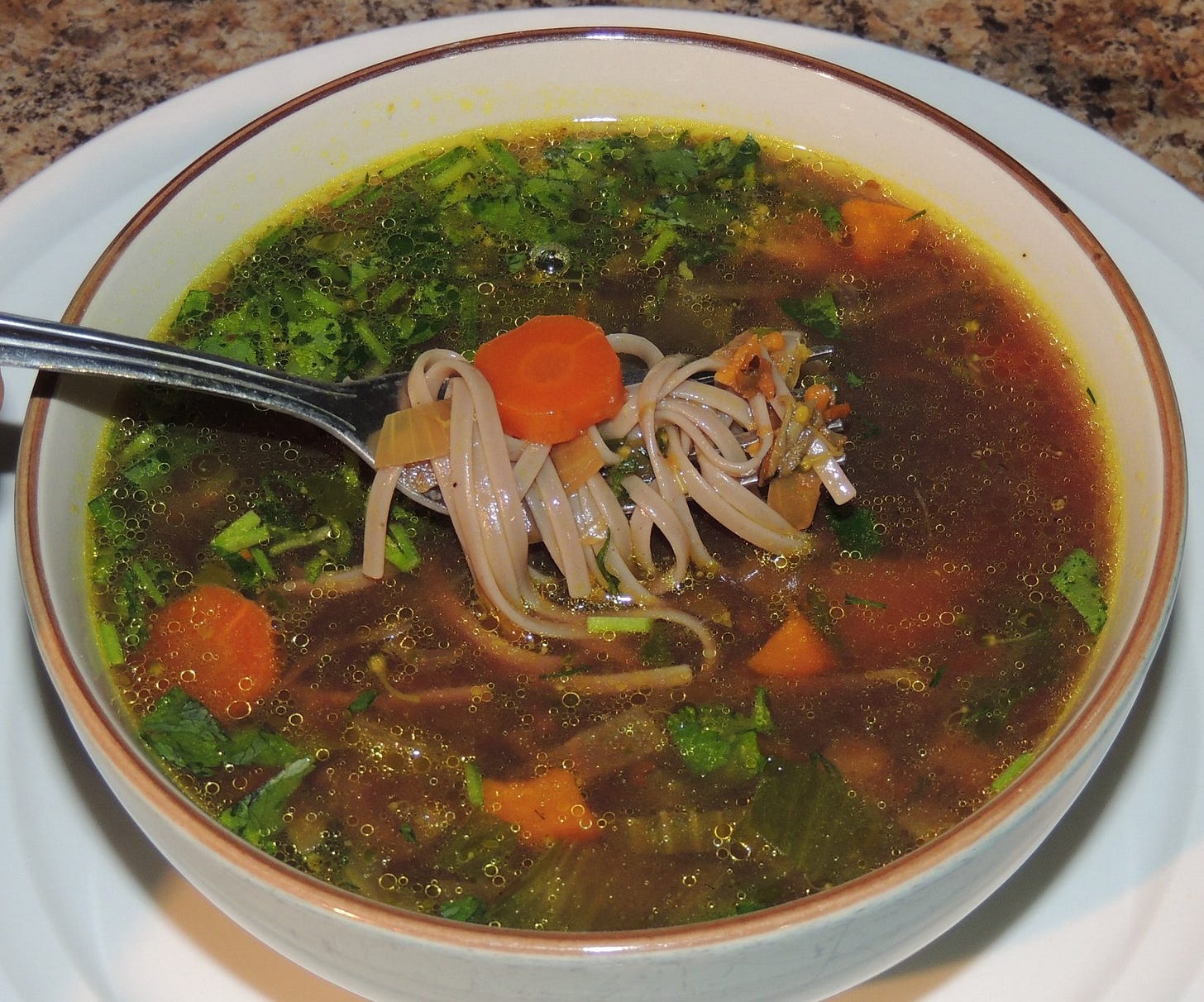

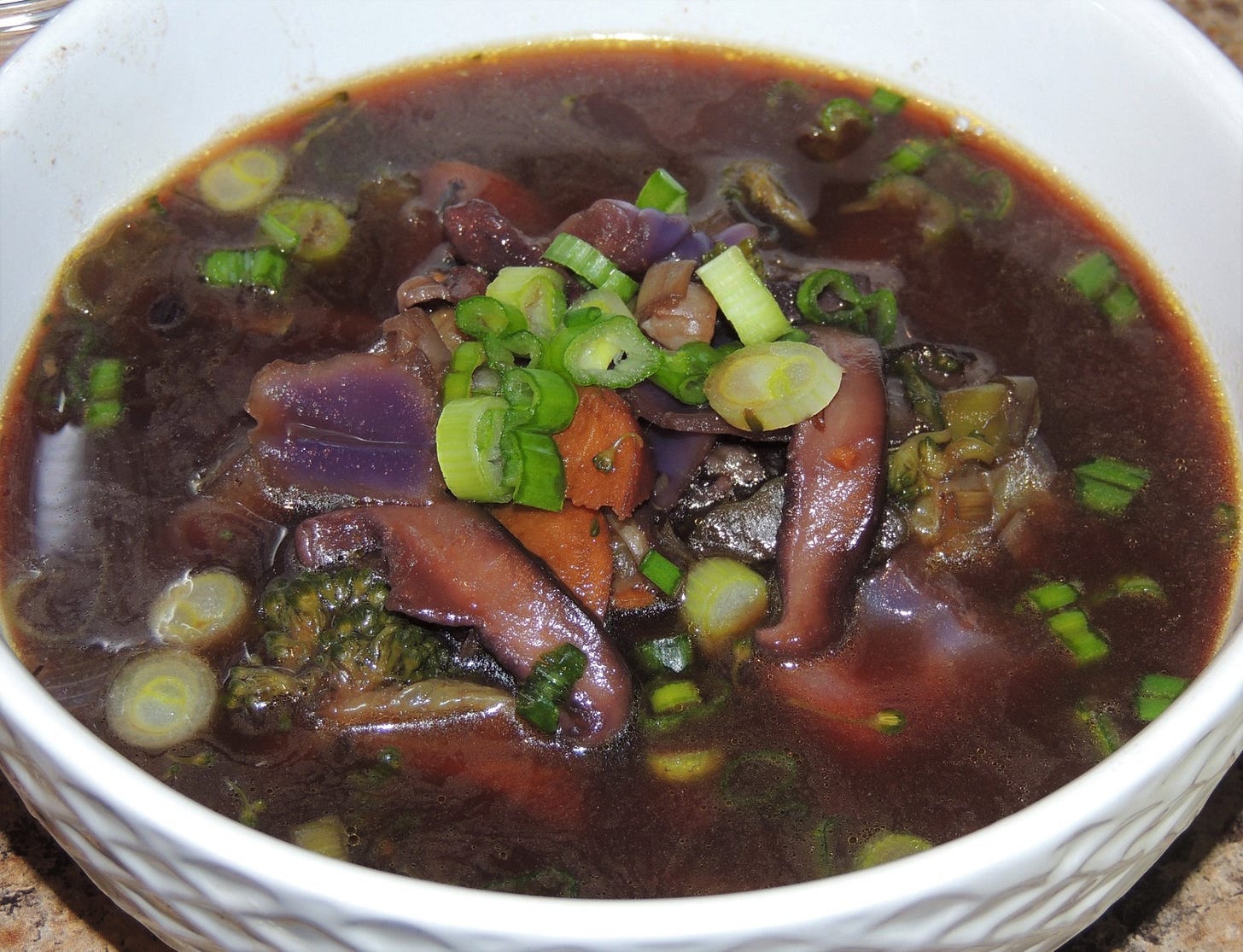


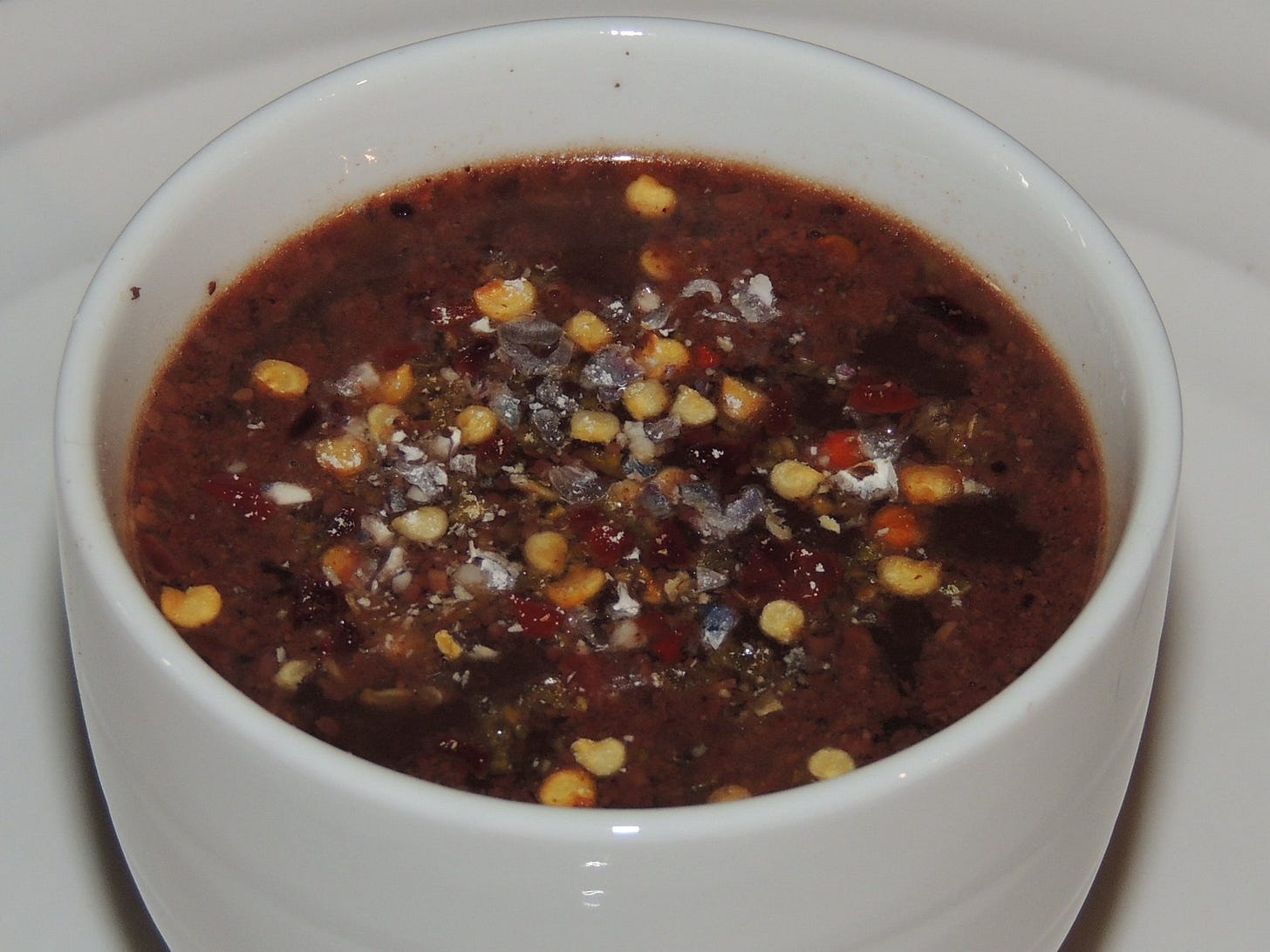
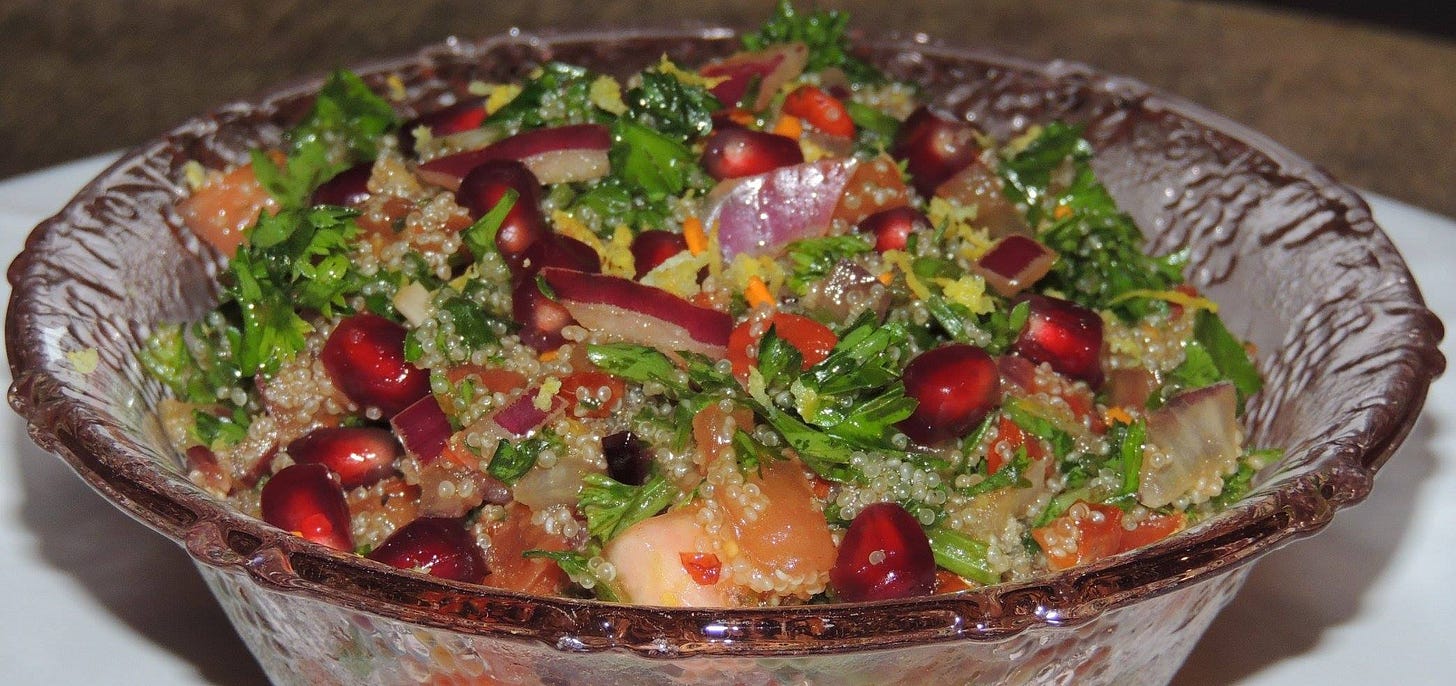
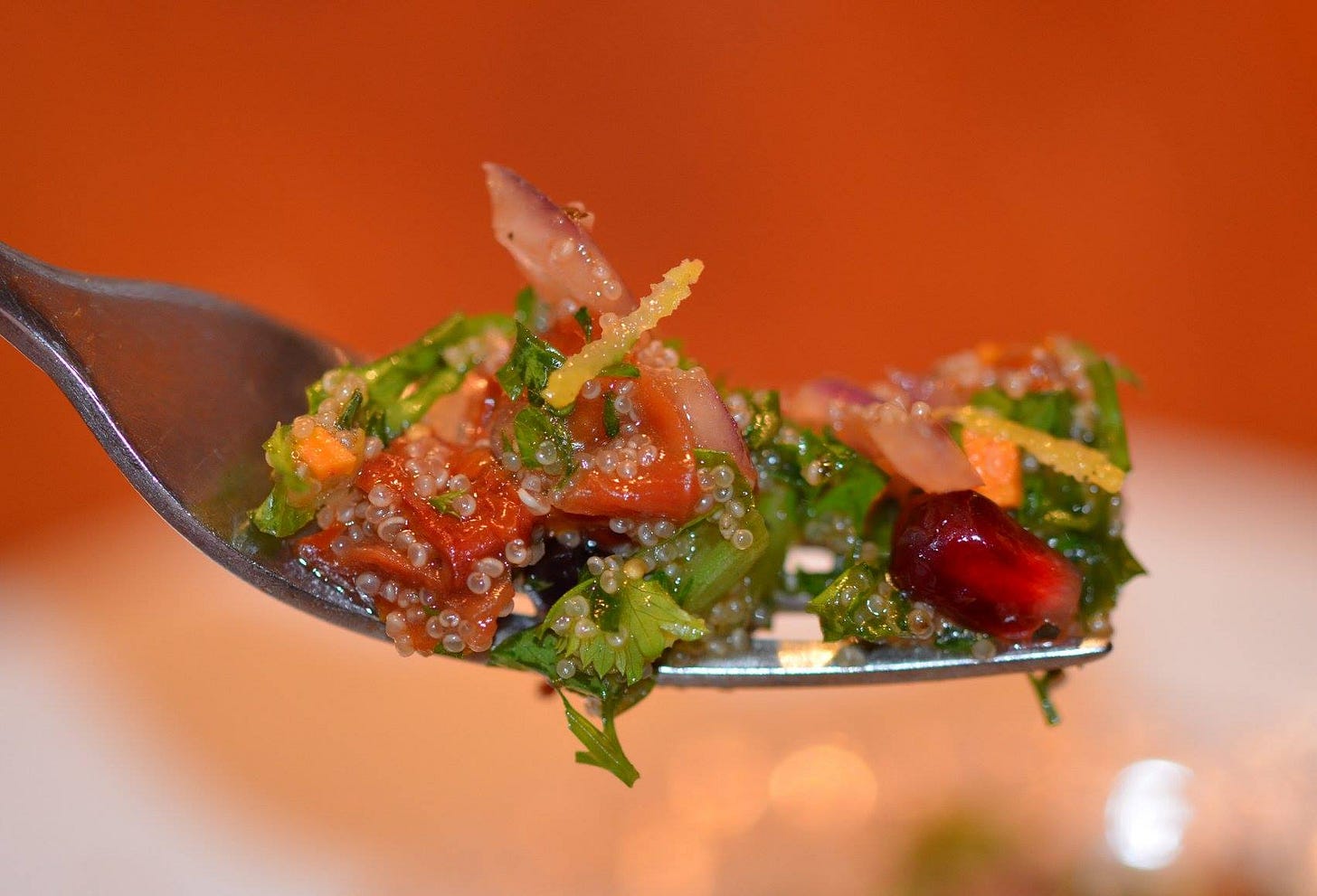
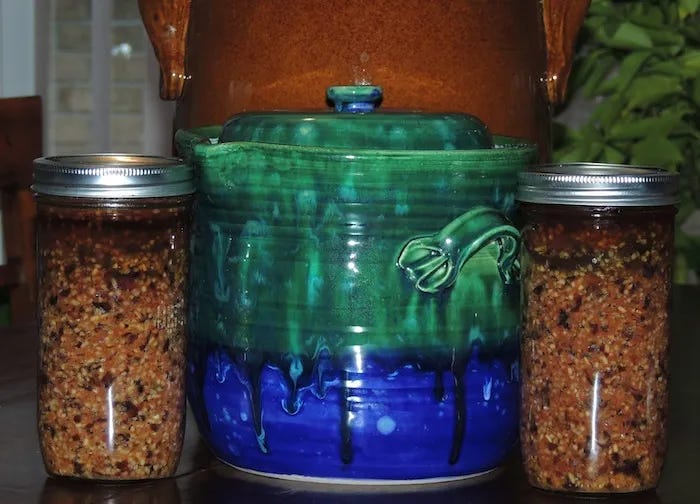
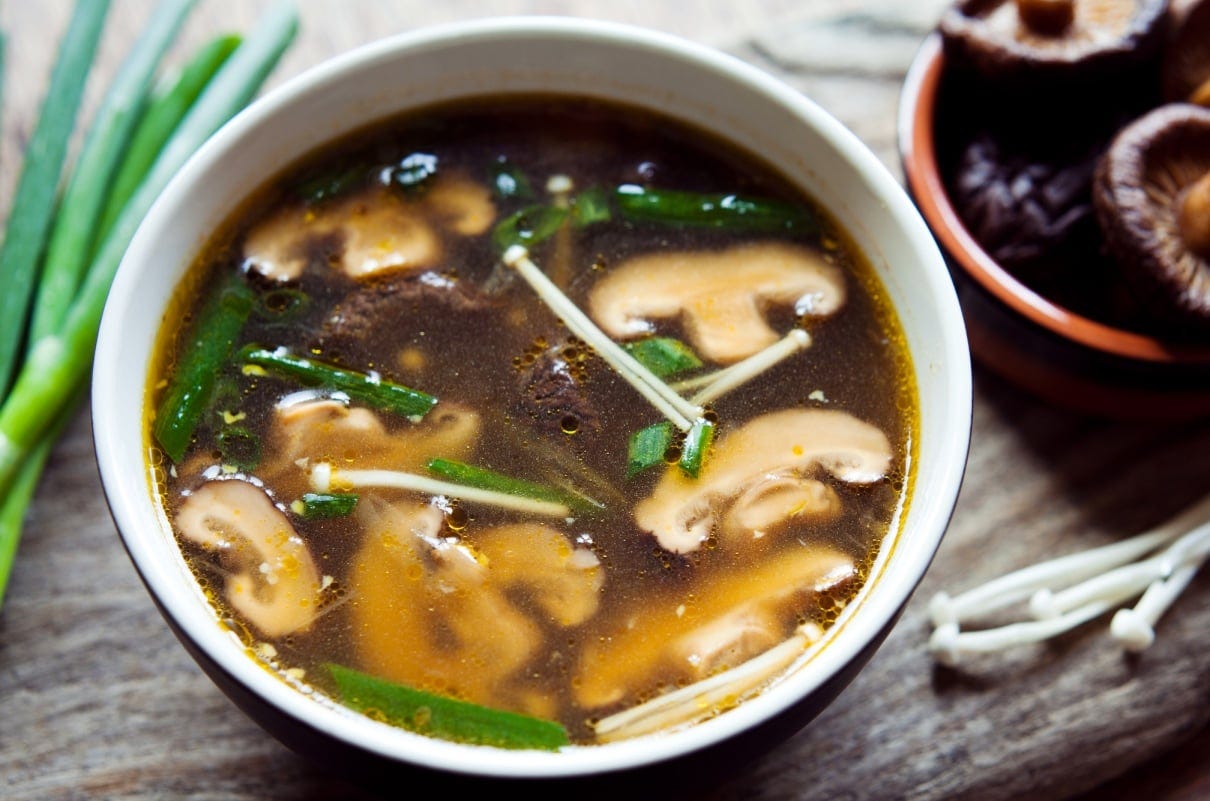

is there any food but natural?
This is a great resource. Thanks!